
The Price Is Wrong: Why Capitalism Won't Save the Planet
by
Brett Christophers
Published 12 Mar 2024
Of course, whatever the industry, capitalist markets are often actively fashioned by government hands, and this is certainly true of electricity. In fact, it would be difficult to think of a sector in which markets are more deeply structured and shaped by state and regulatory design: electricity markets are in significant measure government constructs. As Mark Christie, a commissioner of the US Federal Energy Regulatory Commission, has recently put it, the advanced electricity ‘markets’ we increasingly see around the world today, ‘despite the label [. . .] never have been true markets, but rather administrative constructs with some market characteristics’.3 Still, the point is that it is increasingly the case that, to the extent that they influence how electricity is produced and distributed, by whom and at what prices, governments do so indirectly and at one remove – that is, by establishing ‘free’ electricity ‘markets’, in which they strive not to intervene except in exceptional circumstances such as times of crisis (see Chapter 10).
…
There are several countries in which legal provisions for retail choice have existed for some time, but competition remains trivial nonetheless.25 Generally speaking, the degree of actual competition depends upon the ease of industry entry for would-be retailers, and the propensity to switch suppliers among electricity consumers. Where there exist substantial barriers to entry, to switching or to both, the result tends to be inertia, with consumer engagement – or rather a lack thereof – proving a particular impediment. As Rahmatallah Poudineh has remarked, retail electricity markets have been premised on ‘the assumption that consumers will behave in the retail electricity market as they do in other offer markets’, whereas the reality is that consumers have been dissuaded from switching by factors such as ‘complexity of the retail market and electricity tariffs, transaction costs, uncertainty about the service quality of new suppliers, perceived barriers, and behavioural biases’.26 Meanwhile, progress internationally in opening up electricity generation to competition has been much more substantial.
…
Among the best-known is the Nord Pool power exchange, which upon its launch in 1996 encompassed Norway and Sweden, but which has since expanded to take in more and more countries and today is pan-European. Note here, however, that Nord Pool is not the only wholesale electricity market in Europe: several others exist: just as companies compete with one another in these markets, the markets themselves also compete with one another to attract trade. Needless to say, the scalar expansion of wholesale electricity markets such as has occurred in Europe has been dependent upon commensurate infrastructural developments. Territories whose electricity grids were previously self-contained have increasingly been linked through the construction of interconnectors.
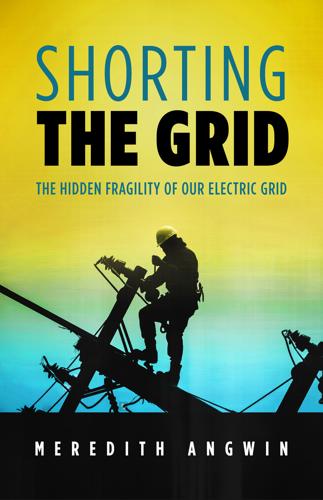
Shorting the Grid: The Hidden Fragility of Our Electric Grid
by
Meredith. Angwin
Published 18 Oct 2020
electric power: The rate at which electric energy is transferred or used to do work, measured in kilowatts, watts, or megawatts. This is also the basic measure used in capacity markets, which are generally auctions for electric-power availability. electricity market: A system for buying and selling electricity, generally using auctions to set the price. Electricity markets generally include electric-energy markets (for example, price per MWh), capacity markets (for example, price per MW that is available for use during a given month), and ancillary-services markets (for example, price for frequency-regulation services or for fast-start reserves).
…
Shorting the Grid reveals reasons why we must pay more attention to grid governance and the potential of poor decisions to override technical successes. — Rod Adams: Blogger at Atomic Insights, Managing Member at Nucleation Capital LP Shorting the Grid reveals what may be the ultimate in Regulatory Capture: so-called “deregulated” electrical markets. In this book, author Meredith Angwin exposes the “deregulated” energy markets as a frightening example of the “Golden Rule” at play. Utilities, generators, and other moneyed interests have the Gold, so they get to make the Rules for the electrical grid that we all rely upon. One troubling consequence: nobody is responsible for ensuring there’s enough electricity on the grid to meet demand.
…
What We Can Do Acknowledgments Glossary Endnotes Index About the Author TABLE OF FIGURES Figure 1: Electricity use on the New England grid Figure 2: Duck curve on the California grid Figure 3: RTO areas of North America Figure 4: Fuel mix moves to oil during the cold snap Figure 5: Days of oil stored at a power plant as cold snap progresses Figure 6: Comparison of regulated and RTO states Figure 7: Electricity prices in Texas, deregulated and regulated areas Figure 8: Revenue streams for different types of plants Figure 9: Annual value of New England wholesale electricity markets Figure 10: Transmission planning regions Figure 11: New England wholesale electricity costs, showing rise of transmission costs Figure 12: Graphs of actual demand on the ISO-NE system Figure 13: Fuel mix charts for all fuels and for renewables only Figure 14: August 1, 2016 rally in New York State, celebrating the ZEC Figure 15: New England wholesale electricity costs Figure 16: The ISO-NE queue: 11,000 MW wind and 3,000 MW natural gas Figure 17: Consumer and prosumer Figure 18: Births per woman vs GDP per capita Figure 19: Wind and solar curtailment totals by month ANGELIC MIRACLES AND EASY PROBLEMS CHAPTER 1 THE BIG SHORT The Grid and I I JUST FINISHED REREADING a frightening book, The Big Short,1 which describes the financial meltdown of 2008 and the few people who saw it coming.
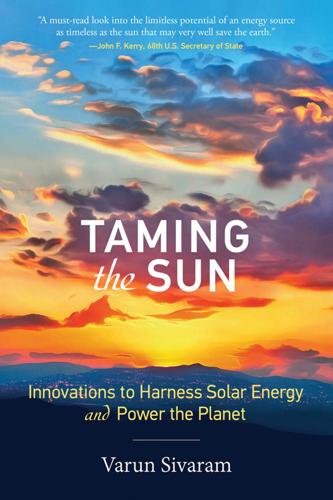
Taming the Sun: Innovations to Harness Solar Energy and Power the Planet
by
Varun Sivaram
Published 2 Mar 2018
Patrick McGeehan, “New York State Aiding Nuclear Plants With Millions in Subsidies,” The New York Times, August 1, 2016, https://www.nytimes.com/2016/08/02/nyregion/new-york-state-aiding-nuclear-plants-with-millions-in-subsidies.html. 40. Paul Joskow, “Capacity Payments in Imperfect Electricity Markets: Need and Design,” Utilities Policy 16, no. 3 (2008): 159–170, doi:10.1016/j.jup.2007.10.003. 41. David Buchan and Malcolm Keay, “EU Energy Policy—4th Time Lucky?” Oxford Institute for Energy Studies, December 2016, https://www.oxfordenergy.org/wpcms/wp-content/uploads/2016/12/EU-energy-policy-4th-time-lucky.pdf. 42. C. K. Woo et al., “Merit-Order Effects of Renewable Energy and Price Divergence in California’s Day-Ahead and Real-Time Electricity Markets,” Energy Policy 92 (2016): 299–312, doi:10.1016/j.enpol.2016.02.023. 43.
…
Andre Gensler et al., “Deep Learning for Solar Power Forecasting—An Approach Using AutoEncoder and LSTM Neural Networks,” IEEE International Conference on Systems, Man, and Cybernetics, 2016, http://ieeexplore.ieee.org/document/7844673/. 44. E. Ela et al., “Wholesale Electricity Market Design with Increasing Levels of Renewable Generation: Incentivizing Flexibility in System Operations,” The Electricity Journal 29, no. 4 (2016): 51–60, doi:10.1016/j.tej.2016.05.001. 45. Jenny Riesz and Michael Milligan, “Designing Electricity Markets for a High Penetration of Variable Renewables,” Wiley Interdisciplinary Reviews: Energy and Environment 4, no. 3 (2014): 279–289, doi:10.1002/wene.137. 46. Michael Milligan et al., “Alternatives No More,” IEEE Power and Energy Magazine, November/December 2015, 78-87, doi: 10.1109/MPE.2015.2462311. 47.
…
Brian Penner, “Grid-Friendly Utility-Scale PV Plants,” First Solar, 2013, https://www.caiso.com/Documents/FirstSolarPresentation_ReactivePowerRequirements_FinancialCompensation_WorkingGroup.pdf. 50. Malcolm Keay, “Electricity Markets Are Broken—Can They Be Fixed?” Oxford Institute for Energy Studies, December 2016, https://www.oxfordenergy.org/wpcms/wp-content/uploads/2016/02/Electricity-markets-are-broken-can-they-be-fixed-EL-17.pdf. 51. Michael Liebreich, “Six Design Principles for the Power Markets of the Future,” Bloomberg New Energy Finance, 2017, https://data.bloomberglp.com/bnef/sites/14/2017/05/Liebreich-Six-Design-Principles-for-the-Power-Markets-of-the-Future.pdf. 52.

Reinventing the Bazaar: A Natural History of Markets
by
John McMillan
Published 1 Jan 2002
This is not to say, however, that California should have deregulated completely. Ongoing government regulation of the electricity market is needed. Prices could have been far above generation costs even under a more thoroughgoing reform. At times of peak demand, when a handful of generators are able to hold the system for ransom, the price is bid very high. Competition by itself cannot always be relied on to hold the price down close to generation costs. Overpricing is an ever-present possibility in an electricity market. Some regulatory oversights on pricing keep in check egregious price-gouging. The transmission grid—the high-voltage lines that carry the power—is by its nature a monopoly, so it cannot be left to an unregulated market.
…
According to the California Assembly bill that initiated it, deregulation would create “a market structure that provides competitive, low cost, and reliable electric service.” It didn’t. The attempt to build a market in electricity went badly awry. The price of wholesale electricity soared to ten times what it had been. Blackouts ensued. Governor Gray Davis labeled the experiment with electricity markets “a colossal and dangerous failure.” The electric utilities once produced most of the power themselves. Production costs were high because, as regulated monopolies, the utilities could pass any cost increases on to their customers in higher rates and so had little incentive to hold their costs down.
…
The control mechanism in a normal market is the price system. It is the movement of prices that makes a market work. When supply is short, the price rises. Consumers have an incentive to use less. Demand falls and the shortage is averted. Price movements make the system self-correcting. In the deregulated electricity market, this simple mechanism was thwarted. Prices were not allowed to do their job. Although the wholesale price at which the utilities bought power was set by the market, the regulators fixed the retail price the utilities could charge their customers. When wholesale prices shot up, retail prices stayed put.
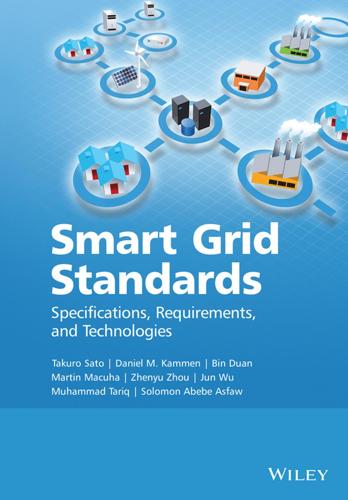
Smart Grid Standards
by
Takuro Sato
Published 17 Nov 2015
In order to ensure the interoperability among different devices, a distributed information processing platform was established on the basis of the IEC 61850 and IEC 61970/IEC 61968 standards. The communications of the electricity market information and the control and status information are based on the CIM and the IEC 61850, respectively. France amended the municipal law in 1999 according to the First EU Electricity Directive, for the purpose of enacting electricity deregulation in 2000. The EDF (Électricité de France), a monopoly company in the electricity market, used to produce 22% of the EU’s electricity through nuclear power plants. The dependence on nuclear power of France has jumped to as high as 85%, which is the highest in the world.
…
Therefore, the separation of electrical power generation from power transmission makes very slow progress. In order to reform the French electricity market, the Nouvelle Organization du Marché de l’Électricité (NOME) law was passed in 2010 to require EDF to sell its nuclear outputs to competitors at a rate specified by the CRE (Commission de régulation de l ’énergie/Energy Regulatory Commission). Under the NOME law, EDF has to sell 100 TWh per year to other electricity suppliers, which ensures that other electricity suppliers can offer competitive prices to customers [49]. In the United Kingdom (UK), after the liberalization of the electric market by enforcing the new Electricity Act 1989, the Distributed Generation Co-ordination Group (DGCG) was established to conduct a purchase obligation of renewable energy by introducing Renewable Obligation Certificates (ROCs) in 2002.
…
The UK regulator Office of the Gas and Electricity Markets (Ofgem) and the government agency, that is, the Department of Energy and Climate Change (DECC), have initiated the DECC/Ofgem Smart Grid Forum, which provides a platform for various electricity network companies to cooperate closely to address significant challenges faced by the implementation of the Smart Grid. The ENSG, which is jointly chaired by both DECC and Ofgem, published the A Smart Grid Vision in November 2009, and A Smart Grid Routemap in An Overview of the Smart Grid 25 February 2010. In July 2010, DECC, Ofgem, and the Gas and Electricity Markets Authority (GEMA) jointly published a prospectus to propose the installation of electricity and gas smart metering in Great Britain.

Net Zero: How We Stop Causing Climate Change
by
Dieter Helm
Published 2 Sep 2020
Equivalent firm power auctions and system operators In the Helm Review, I set out a system architecture to take the existing markets from the coal and gas world to one based on renewables and possibly nuclear.[3] The aim is to normalise renewables so that the electricity market is organised around them, treating them as core, and the fossil fuels as the add-ons, with nuclear, as ever, a special case. There are two key features to a new renewables-driven electricity market: the switch to a capacity world; and the establishment of system operators at the national and local levels. For the last 100 years, the electricity price has been determined by the price of fossil fuels, and that in turn has been driven by the cost of oil, coal and now gas.
…
For a history of the postwar period and the success of the CEGB in meeting the rapid growth of electricity demand, see Helm, D., Energy, the State and the Market: British Energy Policy Since 1979, Oxford: Oxford University Press, 2004. Back to text 8. On EMR, see Department of Energy and Climate Change, ‘Implementing Electricity Market Reform (EMR): Finalised policy positions for implementation of EMR’, policy paper, June 2014. See also www.ofgem.gov.uk/electricity/wholesale-market/market-efficiency-review-and-reform/electricity-market-reform-emr. Back to text 9. See International Renewable Energy Agency, ‘Floating Foundations: A Game Changer for Offshore Wind Power’, 2016. Available at www.irena.org/-/media/Files/IRENA/Agency/Publication/2016/IRENA_Offshore_Wind_Floating_Foundations_2016.pdf.
…
LIST OF ABBREVIATIONS AI, artificial intelligence BSE, bovine spongiform encephalopathy CAP, Common Agricultural Policy CBA, cost–benefit analysis CCC, Committee on Climate Change CCS, carbon capture and storage CEGB, Central Electricity Generating Board CfD, Contract for Difference COP, Conference of the Parties CRISPR, clustered regularly interspaced short palindromic repeats DECC, Department of Energy and Climate Change Defra, Department for Environment, Food and Rural Affairs DDT, Dichlorodiphenyltrichloroethane DETR, Department of the Environment, Transport and the Regions DNO, distribution network operator EFP, equivalent firm power EMR, Electricity Market Reform EU ETS, EU Emissions Trading System GDP, gross domestic product GMO, genetically modified organism GW, gigawatt HS2, a planned high-speed rail project for England ICT, information and communications technology IEA, International Energy Agency IEM, Internal Energy Market IP, intellectual property IPCC, Intergovernmental Panel on Climate Change LED, light-emitting diode LNG, liquefied natural gas mbd, million barrels per day MPC, Monetary Policy Committee NDC, nationally determined contribution NFU, National Farmers’ Union OPEC, Organization of the Petroleum Exporting Countries ppm, parts per million PV, photovoltaics R&D, research and development RAB, regulated asset base SUV, sport utility vehicle TWh, terawatt-hour UNFCCC, United Nations Framework Convention on Climate Change USO, universal service obligation VAT, value-added tax WTO, World Trade Organization INTRODUCTION It is not going well.
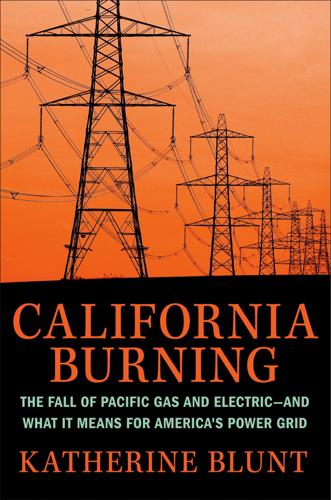
California Burning: The Fall of Pacific Gas and Electric--And What It Means for America's Power Grid
by
Katherine Blunt
Published 29 Aug 2022
GO TO NOTE REFERENCE IN TEXT He saw it as: Sladoje, interview. GO TO NOTE REFERENCE IN TEXT Sladoje made some calls: Sladoje, interview. GO TO NOTE REFERENCE IN TEXT The exchange cleared the trades: Carrie Peyton, “Electric Market Opens for Business,” Sacramento Bee, April 1, 1998. GO TO NOTE REFERENCE IN TEXT All told, $10 million worth: Michael White, “California’s New Electricity Market Opens behind Schedule,” Associated Press, April 1, 1998. GO TO NOTE REFERENCE IN TEXT Sladoje’s team had: Sladoje, interview. GO TO NOTE REFERENCE IN TEXT Peace wrote a letter: “Restructuring Update: Efficient Power Exchange Benefits All California Electricity Ratepayers,” Letter to the Members of the California Legislature from Senate Committee on Energy, Utilities and Communications, May 13, 1998.
…
President Richard Nixon signed a law to permanently extend daylight saving time in a bid to reduce evening electricity use, only to roll it back when children were left standing in the dark as they waited for their morning school buses. Congress, desperate to reduce the nation’s reliance on the Middle East, passed the Public Utility Regulatory Policies Act, a 1978 law meant to stimulate domestic energy production. The law seeded a nascent wholesale electricity market by encouraging companies other than utilities to build wind and solar farms, or gas-fired plants that also produce usable heat in a process called cogeneration. Those technologies, expensive at the time, had little hope of competing on price with conventional power plants. So the law required utilities to buy electricity from the newcomers for roughly what it would have cost to produce it themselves using oil, or, in some cases, other fuels.
…
In other words, the notion of the natural monopoly was suddenly up for debate. So, too, was the role of the regulator. Deregulation was a bit of a misnomer—in the electricity business, regulation can never be fully eliminated. In allowing for competition, regulators would have to keep an eye on electricity markets and determine how utilities should be compensated for power line upkeep. But they would no longer have nearly the same say in determining what electricity ought to cost, a pivot from the philosophy John Eshleman had put forth in the Public Utilities Act of 1912, when California utilities were first becoming vertically integrated monopolies.
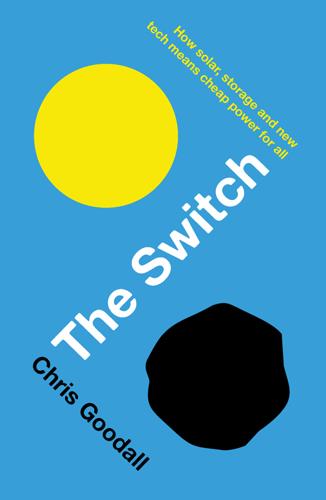
The Switch: How Solar, Storage and New Tech Means Cheap Power for All
by
Chris Goodall
Published 6 Jul 2016
But in California the start-up OhmConnect provides an app for smartphones that tells customers when the electricity market is short of supply and wholesale prices are beginning to spike upwards. (This can be at the daily peak of demand but is more likely to arise when supply is unexpectedly curtailed, such as when a power station fails.) The company sends out an alert, saying that the next hour will be an ‘OhmHour’, and it will pay its subscribers to reduce their electricity draw for 60 or 120 minutes. How does it earn the revenue to pay for this? It sells its promise to reduce demand to the Californian wholesale electricity market. A megawatt hour saved by OhmConnect is identical to a megawatt hour generated by a highly polluting power station that is turned on especially to capture the very high prices paid at times of stress.
…
In the 2004 Dutch/German study I mentioned on p. 22, the researchers told their readers that the experience curve was real and would probably persist in cutting PV prices indefinitely. But they went on to reduce expected industry growth rates to only 15–20 per cent rather than the 40 per cent annual rates experienced up to that point. As a result, they said that ‘reaching break-even for the wholesale electricity market will most probably not happen before 2030’. For sunnier countries, that assertion is already incorrect. It was the same for transistors, the building blocks of the electronic circuitry that now dominates our lives; lower prices meant that the range of financially viable applications increased year after year.
…
Equally importantly, simple gas turbines – essentially jet engines – which are the fossil fuel power stations with the greatest ability to respond to urgent requests to produce more or less power, are being phased out. He realised that in future it might be easier to focus on adjusting demand, not supply, in order to balance the electricity market. It’s fair to say that people who’d been in the electricity industry for decades would have been very sceptical about his business judgment when he decided on his strategy; conventional wisdom was that industry and commerce cannot easily reduce their energy consumption and that flexing the supply of power is always much easier.
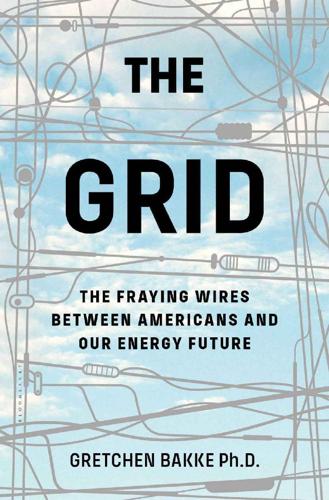
The Grid: The Fraying Wires Between Americans and Our Energy Future
by
Gretchen Bakke
Published 25 Jul 2016
Nor do they need to care for how utility companies will manage the task of keeping people’s lights on when they are faced with the problem of too much power one instant, and too little the next. And even where the utilities do have a modicum of control over the stability of generation, they are losing control of their revenue streams, through rooftop solar, through the loss of big power plants, through the advent of real-time electricity markets, and through interventionist rate making by regulatory agencies that control how much customers will be charged for their electricity. It begins to seem that in the not too distant future the companies we now call “utilities” will become stewards of the wires and little more. But the wires, of course, are the only piece of the whole system that generates no revenue save a small rental fee to those who use them to pass electricity from one cash cow power plant to a thousand or a million paying customers.
…
As late as 1905, it was absurd to imagine that one day the kind of electrical services that small-town America provided to its relatively isolated pockets of population might be knitted into a single system by monopolizing electricity trusts. Or that all the many streetcar companies functioning in America’s bigger cities might be convinced to start buying their power rather than making it for themselves. And yet within twenty years the eight largest utility holding companies in the United States controlled three quarters of the electricity market. So powerful had these trusts become, and so questionable were some of their basic accounting practices, that not only did several collapse completely during the 1929 stock market crash, but the last wave of antitrust laws passed in the early years of the Great Depression was aimed squarely at them.
…
Remarkably disparate interests, including advocates of municipal power networks, of public power projects, and even electricity cooperatives, were all convinced by the 1920s that the monopoly was the best way to manage the manufacture and sale of electric power. There were different visions of who might control such a monopoly—the people, the government, a corporation, a co-op—but the basic notion that electricity markets were to be consolidated and managed without competition was, by the 1920s, universal. Much of the credit for this change goes to the hard, thoughtful work (as well as some barely legal machinations with piles of cash behind the scenes) of Samuel Insull. Born and raised in England, Insull spent his first twenty years in America as Thomas Edison’s personal secretary.
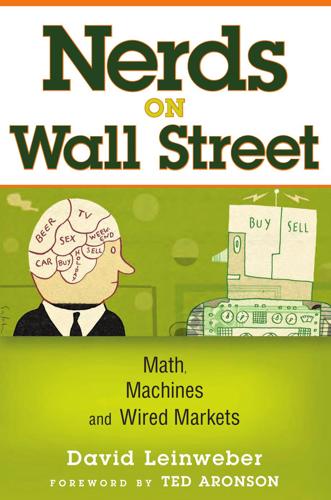
Nerds on Wall Street: Math, Machines and Wired Markets
by
David J. Leinweber
Published 31 Dec 2008
The project emphasizes Ner ds Gone Gr een 337 the interaction between the economic and technical aspects of competitive electricity markets. Our research focused on several specific topics. • Theoretical and experimental studies of alternative auction structures and their implications for participants’ behavior and the efficient operation of the system. • How market rules in conjunction with system characteristics influence market power. • Congestion management and transmission pricing. • Design and analysis of financial instruments for asset valuation and risk management in electricity markets. • Understanding price formation and market operation. • Optimal unit commitment algorithms for competitive electricity. • Design of demand-side contracts.
…
See Electronic Data Gathering, Analysis and Retrieval system Edison Electric Institute, 331 Edison, Thomas, xiv, 18 efficient markets hypothesis, 95–97, 208, 211 Warren Buffett on, 96–97 Electric Power Research Institute, 328, 331, 332 electricity market commonalities with financial market, 328–329, 336–337 market mechanisms, 336–337 electronic communication network, 33, 41 algo wars, 70, 78–79 See also DOT, NASDAQ, NYSE, SuperDOT Electronic Data Gathering, Analysis and Retrieval system, 51, 60, 217–218 electronic execution system Computer Assisted Execution System, 66 Small Order Execution System, 66 See also DOT, MarketMind, QuantEx electronic trading. See MarketMind, QuantEx, electronic execution system electricity market - Bits, Bucks and BTUs, 337–339 EMH. See efficient markets hypothesis energy conservation, 330–337, 339–340 early technologies, 334 innovation, 330–336 smart meter, 334–336 ENIAC, 23–24 Enron, 218, 328 SEC filings and, 52–53, 219–220 Warren Buffett on, 291 EPRI.
…
Over the past 10 years, an investor who was fully and broadly invested in U.S. stocks (the Wilshire 5000) would have gained 13 percent (up to the end of October 2008). If he or she missed the market’s 20 best days, the portfolio would have lost 57 percent—a minus 70 percent difference just by missing the market’s 20 best days. That is a fat tail in the distribution of returns. A Brattle Group discussion paper3 describes a similar fat tail effect in electricity markets: “The demand for electricity is highly concentrated in the top one percent of hours [during a year]. In most parts of the U.S., these 80–100 hours account for roughly 8 to 12 percent of the maximum or peak demand. In the 12 Midwestern and Northeastern states . . . they account for 16 percent.”
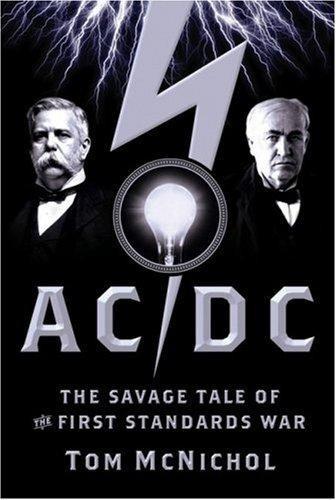
AC/DC: The Savage Tale of the First Standards War
by
Tom McNichol
Published 31 Aug 2006
There were significant ongoing expenses, such as the tons of coal needed to feed the plant’s hungry boilers to produce the steam that drove the dynamos that produced electricity. It wasn’t until Pearl Street’s third year that it turned a profit. Edison wasn’t worried about absorbing a few years of losses. He was seizing the electricity market while it was still in its infancy, building demand for a commodity that, in most areas, he alone could supply. As the Edison company’s 1883 annual report cheerily put it, “The Edison patents, as a matter of law, not only endow our company with a monopoly of incandescent lighting, but aside from the patents, our business has obtained such a start, one so far in advance of all competitors . . . that the business ascendancy is of itself sufficient to give us a practical monopoly.”
…
As the Edison company’s 1883 annual report cheerily put it, “The Edison patents, as a matter of law, not only endow our company with a monopoly of incandescent lighting, but aside from the patents, our business has obtained such a start, one so far in advance of all competitors . . . that the business ascendancy is of itself sufficient to give us a practical monopoly.” c05.qxp 7/15/06 66 8:36 PM Page 66 AC/DC Edison’s only competition was in Europe, where the electricity market was cutting a different path. In 1882, French scientist Lucien Gaulard and his English business partner John Gibbs patented a system for distributing electricity that was fundamentally different from the Edison System in operation at Pearl Street. The centerpiece of the Gaulard-Gibbs system was its novel power transformer, a more advanced version of the device Michael Faraday had fashioned in his laboratory half a century before.
…
c08.qxp 7/15/06 8:49 PM Page 107 8 OLD SPARKY Now it was total war. What began as an ordinary skirmish between competing technical standards had deteriorated into a grotesque campaign of lies and fear mongering. The high stakes had brought out the worst in practically everyone. The winners in the AC/DC battle stood to control the electricity market for decades to come; the losers would be forced to retool their entire operation at great expense or risk going out of business. The mysterious nature of electricity only made it easier to make sensational public claims. Reasoned arguments in favor of direct or alternating current were no match for appeals to fear, the deeply rooted dread of lightning that humans had carried around for tens of thousands of years.
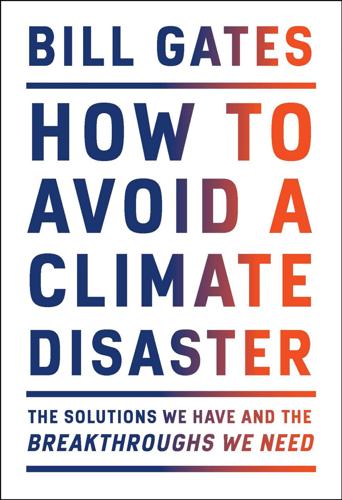
How to Avoid a Climate Disaster: The Solutions We Have and the Breakthroughs We Need
by
Bill Gates
Published 16 Feb 2021
And they can help fix some problems that the market isn’t set up to deal with—including the hidden costs that carbon-emitting products impose on the environment and on humans. Many of these decisions are made at the national level, but state and local governments have a big role too. In many countries, subnational governments regulate electricity markets and set standards for energy use in buildings. They plan massive construction projects—dams, transit systems, bridges, and roads—and choose where these projects will be built and with what materials. They buy police cars and fire engines, school lunches, and lightbulbs. At each step, someone will have to decide whether to go with the green alternatives.
…
This includes transmission lines for wind and solar, charging stations for electric vehicles, and pipelines for captured carbon dioxide and hydrogen. Change the rules so new technologies can compete. Once the infrastructure is built, we’ll need new market rules that allow the new technologies to be competitive. Electricity markets that were designed around 20th-century technologies often put 21st-century technologies at a disadvantage. For example, in most markets, utilities that invest in long-duration storage aren’t appropriately compensated for the value they’re providing to the grid. Regulations make it hard to use more advanced biofuels in cars and trucks.
…
Most state or provincial governments have a central role in regulating electricity, planning infrastructure like roads and bridges, and selecting the materials that go into these projects. National governments generally have authority over activities that cross state or international borders, so they write the rules that shape electricity markets, adopt pollution regulations, and create standards for vehicles and fuels. They also have enormous procurement power, are the primary source of fiscal incentives, and usually fund more public R&D than any other level of government. In short, every national government needs to do three things.

Markets, State, and People: Economics for Public Policy
by
Diane Coyle
Published 14 Jan 2020
Meanwhile, despite the ever-increasing detail of the regulation, and government intervention in supposedly private decisions, such as the new generation of nuclear projects, and multiple reforms of the market structure, there is no explicit acknowledgment of the reality that the state will never leave energy to the market. Many countries struggle with organizing the electricity market; the UK is not unique, although it has been a pioneer in trying new models. In Australia, for example, the vast geographic scale of the grid and surges in demand for air conditioning during ferocious heat waves have led to power cuts. The industry was privatized and restructured in the mid-1990s, switching from a state-level pattern to a national (wholesale) electricity market. There are three federal regulators, with different responsibilities, issuing detailed and inflexible rules that give the private generators little incentive to respond to changes in demand.
…
Whatever the ownership structure and organization in the electricity business—and these vary widely between countries—it is difficult to establish competition in an industry with such large economies of scale (assumption A3 from box 1.4 fails). It is also difficult to regulate. The electricity sector is one of the most politically sensitive and contested across the globe. The electricity market has many distinctive features: • Electricity cannot be stored easily—matching supply to demand is harder than in other markets because it has to happen at every instant, including those times when everybody turns on the oven or the TV at the same time. (This is the peak loading problem, the same as Uber faces shortly after midnight on New Year’s Eve
…
Prices have been rising, power outages occur from time to time, and significant new investment is required. California, too, has had a particularly fraught experience with electricity deregulation (box 2.10). Box 2.10. California’s electricity restructuring disaster In the early 2000s something had clearly gone wrong with the electricity market in California, which had been deregulated in the mid-1990s following the example set by the United Kingdom. The generation of electricity was deregulated, as was the retailing of electricity to customers through resellers—energy service providers. In between were the transmission and local distribution by utility companies, which bought from the generators in markets vulnerable to price spikes because of the inherent variability of demand for electricity, and sold power to the retail providers, at prices that remained regulated and politically sensitive.
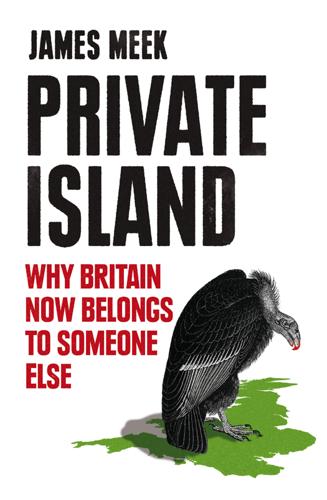
Private Island: Why Britain Now Belongs to Someone Else
by
James Meek
Published 18 Aug 2014
He was only interested in price, and claimed partial credit for the sudden cheapness of electricity: he attributed it to Neta, a wholesale electricity trading system that he favoured and the government backed. The New Electricity Trading Arrangements were designed to bring prices down by making the electricity market fairer and more open. On the face of it, Littlechild had cause for satisfaction, too. He could point out that the fate of the Americans – some, notably TXU of Houston, lost their shirts in Britain – gave the lie to the notion that the privatised electricity system was a licence for capitalists to print money.
…
At least that’s what an MP told Dieter Helm a few years ago when he was giving evidence in Parliament. People warned there would be blackouts the previous winter, the MP said, and there weren’t. With unusual passion, Helm put him straight. If you define the problem as the lights not going out, he said, you misunderstand everything about the way the new world of electricity markets works. The ideal situation for private electricity firms is one where there is only just enough electricity to go round; where the lights are always just about to go out, but never quite do. Then they can charge as much as they like, and people will have to pay. ‘People think insecurity of supply means will the lights go off or not – but that is not the issue,’ he said.
…
I am grateful to Dieter Helm, who read through the original version of the ‘Taking Power’ article before it was published in the LRB; to Michael Pryke, who read ‘Not a Drop to Drink’; and to Nick Timmins, who read ‘Multiple Fractures’. Any flaws in these chapters remain my responsibility. Examples of electricity market abuse were found in Power Systems Restructuring: Engineering and Economics, edited by Marija D. Ilic, Francisco Galiana and Lester Fink, and Privatization, Restructuring, and Regulation of Network Utilities, by David Newbery. Right to Buy: Analysis and Evaluation of a Housing Policy, by Colin Jones and Alan Murie, was an invaluable text, as was Matt Griffith’s report We Must Fix It, available on the IPPR website (ippr.org).

Green Tyranny: Exposing the Totalitarian Roots of the Climate Industrial Complex
by
Rupert Darwall
Published 2 Oct 2017
Electrical current from one generator supplied into an electricity pool is perfectly substitutable for current from another at that point in time. But electricity is heterogeneous over time. The moment demand changes, the optimal generating mix changes and the wholesale price changes.6 This heterogeneity is reflected in how wholesale electricity markets work. European power exchanges typically clear markets each hour in each bidding zone. U.S. markets often clear the market in steps of five minutes in each node of the transmission grid. This makes the electric wholesale market unlike any other. There are 100,000 prices a year in Germany and 3 billion in Texas.7 Except to a very limited extent, grid-scale electricity cannot be stored, so the possibility of price arbitrage is extremely limited.
…
The most intense period of price volatility in the U.S. Gulf Coast Conventional Gasoline spot price was during the post-Lehman financial crisis, when investors sought refuge in real assets, and the price doubled in 14 days.9 Even this panic-induced volatility is slight compared to what is experienced in the wholesale electricity market as a matter of course, where there can be a difference of up to four orders of magnitude (1 to 10,000) between the high and low hourly prices in a typical year.10 Wholesale prices drive both short-term scheduling decisions on which generators should supply electricity in response to changes in demand (the merit order curve) and long-term investment decisions.
…
Renewable Destruction 1Federal Ministry for the Environment, Nature Conservation, Building and Nuclear Safety, “Erneuerbare-Energien-Gesetz tritt in Kraft” (“Renewable Energy Law Comes into Force”), July 30, 2004, http://www.bmub.bund.de/presse/pressemitteilungen/pm/artikel/erneuerbare-energien-gesetz-tritt-in-kraft/ (accessed August 12, 2015). 2Reuters, “German ‘Green Revolution’ May Cost 1 Trillion Euros—Minister,” February 20, 2013, http://www.reuters.com/article/2013/02/20/us-germany-energy-idUSBRE91J0AV20130220 (accessed September 2, 2015). 3Quoted from Alexander Wendt, Der Grüne Blackout; Warum die Energiewende Nicht Functionieren Kann (The Green Blackout: Why the Energiewende Cannot Work) (Munich, 2014), p. 11. 4Alexander Wendt, Der Grüne Blackout; Warum die Energiewende Nicht Functionieren Kann (The Green Blackout: Why the Energiewende Cannot Work) (Munich, 2014), p. 15. 5Hans Poser, Jeffrey Altman, Felix ab Egg, Andreas Granata, and Ross Board, Development and Integration of Renewable Energy: Lessons Learned from Germany (July 2014), Figure 16, www.finadvice.ch. 6The Economist, “The Cost del sol,” July 20, 2013, http://www.economist.com/news/business/21582018-sustainable-energy-meets-unsustainable-costs-cost-del-sol (accessed September 25, 2015). 7Competition and Markets Authority, Energy Market Investigation: Provisional Findings Report (July 2015), para. 2.144. 8Ibid., para. 5.180. 9Rupert Darwall, Central Planning with Market Features: How Renewable Subsidies Destroyed the UK Electricity Market (London, 2015), p. 44. 10Competition and Markets Authority, Energy Market Investigation: Provisional Findings Report (July 2015), para. 7.7. 11Office for Budget Responsibility, Economic and Fiscal Outlook, Cm 9088 (July 2015), Table 4.5. 12Competition and Markets Authority, Energy Market Investigation: Provisional Findings Report (July 2015), para. 2.74. 13Ibid., para. 2.80. 14Deutscher Bundestag, Unterrichtung durch die Bundesregierung: Gutachten zu Forschung, Innovation und technologischer Leistungsfähigkeit Deutschlands 2014 (March 2014), p. 49; and Fritz Vahrenholt interview with author, June 6, 2015. 15Alexander Wendt, Der Grüne Blackout; Warum die Energiewende Nicht Functionieren Kann (The Green Blackout: Why the Energiewende Cannot Work) (Munich, 2014), p. 16. 16Ibid., p. 19. 17Ibid., p. 20. 18Deutscher Bundestag, Unterrichtung durch die Bundesregierung: Gutachten zu Forschung, Innovation und technologischer Leistungsfähigkeit Deutschlands 2014 (March 2014), p. 49. 19Ibid. 20Manuel Frondel, Nolan Ritter, Christoph M.
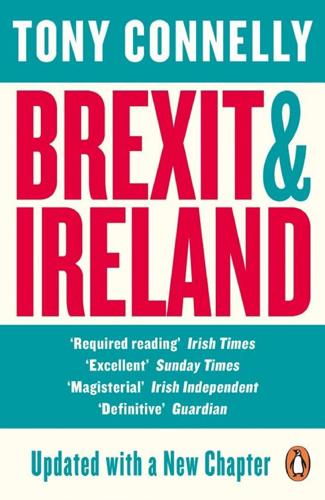
Brexit and Ireland: The Dangers, the Opportunities, and the Inside Story of the Irish Response
by
Tony Connelly
Published 4 Oct 2017
The Treasury has said it will continue to support the sector after 2020, but few observers believe they will match the vast CAP subsidies. Ireland’s fishing fleet depends on access to UK waters under the EU’s Common Fisheries Policy (CFP). Might the UK close those waters post-Brexit? Ireland has become much more dependent on the UK for energy. There are gas and electricity interconnectors, and there’s a single electricity market on the island of Ireland. Brexit will have implications for how that interdependence is governed, both in terms of the rules underpinning it and the investment decisions taken by the UK in the future. Also, how will Brexit hit cross-border education, security cooperation, health services, pension and social-welfare entitlements?
…
On one occasion, the Sinn Féin MEP Martina Anderson arranged a cross-border delegation under the Brexit Border Communities banner, but she was politely informed that as an MEP from a ‘British’ constituency, it was ‘not appropriate’ for her to be included. The UK was still subject to the no-negotiation-before-notification rule. Every Brexit issue, from data processing to the single electricity market to aviation, could be explored in Room 201. But agri-food dominated: the movement of animals and dairy products, the border, fisheries and customs posts. ‘The message,’ says one Commission source, ‘was that this is unprecedented, this is extraordinary, we need extraordinary support.’ But officials had to remind Irish delegations that they could only listen and register.
…
There is closer cooperation between energy regulators, a common certification for transmission-system operators, and systems to approve interconnectors, manage congestion and transmission charges, and so on. The EU also encourages the pooling of energy as a way to withstand external shocks, such as Russia turning off the gas. Since 2007, Northern Ireland and the Republic have operated the Single Electricity Market (SEM), a wholesale electricity-trading pool across the island. But Brexit could reverse decades of Irish–UK energy cooperation, and carve a border through the SEM. Gas piped over from the UK is used to generate 46 per cent of the electricity supply on the island of Ireland. Northern Ireland is heavily dependent on that electricity coming north from Loughshinny and Gormanston.
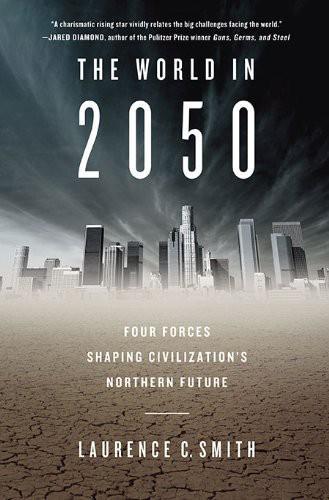
The World in 2050: Four Forces Shaping Civilization's Northern Future
by
Laurence C. Smith
Published 22 Sep 2010
In 2010 the Obama administration approved the United States’ first offshore wind farm near Cape Cod, Massachusetts. The wind power industry has a thirty-year legacy and is now reaping double-digit growth. Depending on the choices we make,155 our global wind power capacity is expected to grow anywhere from tenfold to over fiftyfold by the year 2050, cornering 2%-17% of the world’s electricity market. That leaves solar energy. The Sun, in principle, offers us more inexhaustible clean power than we could ever possibly use. One hour of sunlight striking our planet contains more energy than all of humanity uses in a year. It absolutely dwarfs all other possible energy sources, even if we add up all of the world’s coal, oil, natural gas, uranium, hydropower, wind, and photosynthesis combined.
…
Globally, the solar power industry is over USD $10 billion per year and growing 30%-40% annually, even faster than wind power. 166,167 Depending on the choices we make,168 world electricity production from solar sources is expected to grow anywhere from fiftyfold to nearly two thousandfold by 2050, cornering some 0%-13% of the world’s electricity market. That zero was not a typo. This is all very exciting and will surely inspire many investor fortunes in the stock market. But if you’ve been adding up the numbers as we went along, you’ve already figured something out: Fast-growing as they are, the blunt truth is that the clean, renewable energy sources we’d all love to have—wind, solar, hydro, geothermal, tidal, and (sustainably grown) biomass—are in no position to replace nonrenewable sources by 2050.169 Despite blistering growth, by 2050 solar energy will just be starting to substantially dent our energy needs.
…
However, these two fossil fuels already dominate the world’s electricity generation, with about 40% coming from coal and 20% from natural gas (in contrast, only 7% of all electricity is generated using oil). A transition to electric cars, therefore, would seem a natural one even without renewable and nuclear sources of electricity. Should current trends continue unabated, coal demand will nearly triple by 2050, at which point it would capture 52% of the electricity market. Natural gas demand will more than double, at which point it would capture about 21%. However, nothing is fixed about these “business as usual” projections. Through aggressive conservation measures, and development of natural gas, nuclear, and renewable sources, for example, global electricity production from coal could be as little as a few percent by then.170 There are compelling reasons for the world to work toward this goal, as we shall see shortly.
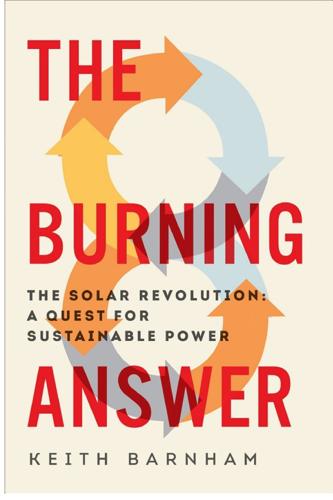
The Burning Answer: The Solar Revolution: A Quest for Sustainable Power
by
Keith Barnham
Published 7 May 2015
I suspect that all these factors play some part in the inordinate determination of successive British governments to ensure new nuclear reactors will be built. As costs have soared they have moved from a position of ‘allowing the market’ to invest in new-build to the current government’s position of committing vast amounts of taxpayers’ money to rig the electricity market in favour of nuclear with ‘contracts for difference’ to guarantee a high price for nuclear electricity. It is still not clear that this policy will convince ‘the market’ to invest the massive sums required for a new generation of nuclear reactors. As we will see, the crunch will come when one or other of the prototypes eventually work.
…
A picture of a computer simulation of the multifunctional smart windows system, which generates electricity from the direct sunlight but allows diffuse light into the room, is shown in a figure in a paper I wrote with colleagues for the trade magazine Compound Semiconductor [8]. I used the Green Electricity Market Place [9] to decide Good Energy were the all-renewable electricity supplier for me. I am grateful to Ed Gill for explaining the company philosophy. Further details can be found on their website [10]. Ed is no longer with the company, but Chris Welby kindly confirmed some points [11]. Information on solar thermal systems can be found from the Energy Savings Trust website [12].
…
Keith Barnham, Alison Dobbin, Matt Lumb and Tom Tibbits, ‘Tuning the Triple-junction’, Compound Semiconductor, March 2011, p. 32, http://www.compoundsemiconductor.net/csc/features-details.php?cat=features&id=19733453&key=Tuning%20the%20triple-junction&type, accessed 20 January 2014. 9. The Green Electricity Market Place is at http://www.greenelectricity.org/index.php, accessed 16 January 2014. 10. Good Energy website, http://www.goodenergy.co.uk/about/adifferent-kind-of-energy-company/how-we-buy-and-sell-electricity, accessed 16 January 2014. 11. Chris Welby, Policy and Regulatory Affairs Director, Good Energy, private communication. 12.

Food and Fuel: Solutions for the Future
by
Andrew Heintzman
,
Evan Solomon
and
Eric Schlosser
Published 2 Feb 2009
Advertising campaigns (and tax subsidies) that encourage Americans to buy a 10-mpg (23.5-L/100-km) Hummer H2 so that they can paste an American flag on it and feel like they are patriotically supporting the troops in the Middle East ensure that those young men and women will continue to be in harm’s way, driving 0.5-mpg (470-L/100-km) tanks and 17-feet-per-gallon (73,000-L/100-km) aircraft carriers. Such behaviour also ensures that we will all get to enjoy yet another energy crisis. In 2000, California created such a crisis with its ham-handed program to “deregulate” electricity markets in such a way as to allow the incumbent “big dogs to eat first.”12 Once the world leader in energy efficiency, with financially healthy utilities and sensible resource policies, California nearly plunged the whole of the United States into the next energy crisis. Panicked by so-called power shortages and exhorted by Vice President Dick Cheney’s call to build at least one power plant a week,13 developers planned to add electricity-generating capacity equivalent to 83 percent of the state’s current total demand, 96 percent of the western region’s, and at least one-third of the nation’s.
…
Rural location, which affects transportation, as well as age, education, family situation, or even being new immigrants are other factors that should be examined as creating the conditions for unfairly burdensome impacts. The world today has also brought a number of changes that certainly affect what a soft path will look like, but in ways that are not yet clear. Among the most important are the deregulation and reorganization of utilities and the electricity market; the role of exports in countries like Canada that have or could build the capacity for dedicated energy export facilities; and how key emerging technologies will evolve, especially in the transportation sector, where change is also closely linked to changes in settlement patterns, urban and suburban planning, trade, and the structure of industry.
…
The European Commission took the first step toward possible reform of E.U. energy subsidies by producing an inventory of all forms of state support provided to the fossil fuel, renewable, and nuclear energy sectors. Published in December 2002, the document “Working Paper of the European Commission: Electricity from Renewable Energy Sources and the Internal Electricity Market” says the inventory may determine “whether certain energy sources are . . . given advantages that do not adhere to the objectives of energy policy and combating climate change.” In recent years, members of the European Parliament, environmentalists, international bodies such as the OECD, and, increasingly, member state governments have been asking for the support granted to different energy sources to be made more transparent.

The Smartest Guys in the Room
by
Bethany McLean
Published 25 Nov 2013
It was true that Enron was a pioneer in starting up power trading, just as it had been in setting up a trading market for natural gas. But unlike natural gas—where Skilling understood the business and had a clear sense of how trading would work and what value it would add—he had no special insight into electricity trading. Instead, his rationale went something like this: the wholesale electricity market (that is, the power that was sold back and forth among electric utilities) was huge—by Enron’s estimates, about $91 billion a year, triple the size of the market for natural gas. Assuming the company could create an electricity-trading business and claim 20 percent of it, the payoff would be enormous.
…
“We talked to a dozen utility executives, and they all kicked us out of their offices,” recalls one of his former aides. “Jeff didn’t have the practical experience to realize there are some things you can’t do.” Skilling finally came to appreciate the state of affairs. “They hated us,” he later admitted. “The electricity guys were scared to death of Enron. It was very hard to break into the electricity market.” So Skilling went in another direction: he decided to buy his way into the club by having Enron purchase a utility. He wanted one in the West, with access to the California market, in part because that market was so big and in part because it was one of the few states up to that point to pass any form of retail deregulation allowing direct access to consumers of electricity.
…
This was the piece of the company Andy Fastow had tried to run back in 1996, when he’d spent nine months unable to devise a business plan before finally returning to finance, his tail between his legs. (His replacement was Rick Causey, who had an even shorter stint before being promoted to chief accounting officer.) For years, Enron’s retail business wasn’t much more than a vague concept, revolving around the idea that just as the wholesale electricity market had been deregulated, so, too, would the retail market one day. And when that happened, Enron needed to be in a position to sell power (and even gas) directly to consumers nationwide, cutting America’s utilities out of the picture. It was a given that Enron would make money doing so, because, well, Enron always made money in the wake of energy deregulation.
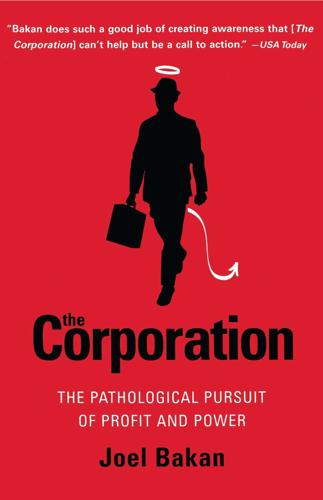
The Corporation: The Pathological Pursuit of Profit and Power
by
Joel Bakan
Published 1 Jan 2003
Stripped down to its essentials, Enron's is the story of a corporation that used political influence to remove government restrictions on its operations and then exploited its resulting freedom to engage in dubious, though highly profitable, practices. Through the 1990s, the company and its officials, chiefly former CEO Kenneth Lay, dumped huge amounts of money into the political process to help transform an unremarkable pipeline company into a powerhouse energy trader. After lobbying successfully for deregulation of electricity markets in several states, among them California, it began a campaign to deregulate the trading of energy futures. In the early 1990s, it and several other energy companies sought to exempt themselves from the Commodity Exchange Act's requirement that energy traders disclose information about their futures contracts to the Commodity Futures Trading Commission (CFTC), the agency responsible for enforcing the act.
…
As Ralph Nader's Public Citizen organization concluded, "Phil Gramm's commodities deregulation law allowed Enron to control electricity in California, pocket billions in extra revenues and force millions of California residents to go hundreds of hours without electricity and pay outrageous prices." On June 19, 2001, the crisis was brought to an end when the Federal Energy Regulatory Commission imposed strict price controls on California's electricity markets. Spot prices fell by more than 80 percent, and Enron, which had bet on prices remaining high, having had no reason to believe its manipulation of markets would be stopped, was left with billions of dollars of contracts now worth a fraction of what it had paid for them. The company began to bleed.
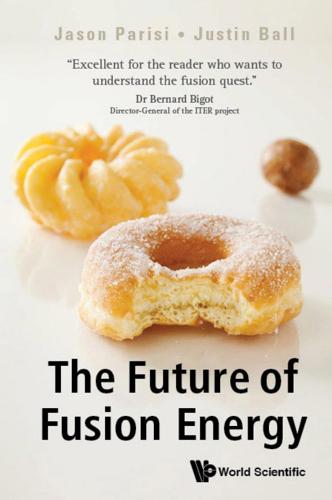
The Future of Fusion Energy
by
Jason Parisi
and
Justin Ball
Published 18 Dec 2018
This is primarily because the following two statements are true: Fusion energy generation is difficult to start, but easy to stop. Fission energy generation is easy to start, but difficult to stop. Due to the relative ease of inducing fission reactions, fission power plants required less research and development, quickly entering the electricity market. However, the difficulty of turning off a fission plant is a compelling reason to prefer fusion. To understand why fission is hard to stop, we must first start with the basics. As the name suggests, nuclear fission involves breaking one heavy atom into two lighter ones. The most practical way to do this is to hit certain barely stable nuclei, most notably that of uranium-235 (composed of 92 protons and 143 neutrons), with a neutron.
…
Equation (8.1) sets the ultimate goal. We will know that fusion has arrived when it stops being the exciting thing to do and starts being the cheap thing. Of course there are caveats to this, several of which significantly impact the viability of fusion. As mentioned in Chapter 1, the current electricity market does not properly account for several important externalities, most notably climate change, atmospheric pollution, and nuclear proliferation. Additionally, the current scarcity of energy resources drives global conflicts (e.g. wars over oil), which have very steep economic and human costs. The failure to account for all these externalities puts fusion at an artificial disadvantage because the externalities of fusion energy appear small compared to other energy sources.
…
Figure 9.9:A comparison of the sizes of the T-3 tokamak and five different fusion startups devices: General Fusion’s Mini-Sphere, Tokamak Energy’s ST40, TAE Technologies’ C-2U, Helion Energy’s IPA, and Lockheed Martin’s T4. That said, nothing would be better for the fusion community (and the world), than for one of these companies to succeed. The number of fusion researchers is small and the electricity market is vast, so everyone’s employment prospects would skyrocket. Thus, it would seem like the interests of government-funded fusion programs and these companies should be well-aligned. Unfortunately, there are some significant differences in their research environments. On one hand, for-profit companies must attract investors who are presumably seeking profits within a decade or so.

The Driving Machine: A Design History of the Car
by
Witold Rybczynski
Published 8 Oct 2024
It would be another thirty years before an electrically powered car reappeared, although it was hardly a car at all in the conventional sense. According to most accounts, the golf cart came about thanks to Merle Williams of Long Beach, California. In 1946, during the Second World War when gasoline was rationed, Williams founded the Electric Marketeer Manufacturing Company, which produced electric bicycles that towed one-wheeled trailers “to the market.” Later, as a favor to his wife, Peggy, Williams built an electrically powered runabout, and like the British inventor Lawrence Bond, whose design for a shopping vehicle for his wife turned into the Bond Minicar, Williams’s electric cart became the foundation of a successful business.
…
on BMW 2002, 140 on Corvair, 115 Daytona Beach Raceway, 155 Dean, James, 155n Delagarde, Louis, 120–21, 126 delivery vans, electric, 186–87 DeLorean (1981), xiv, 196 Department of Energy, US, 194 depot hacks, 60–61 design architectural design versus car design, xiii–xiv innovative 1920s and 1930s, 81 Jellybean Era, 173 late 1950s–1960s as apogee of, 202–3 as sales tool, 84–85 de Tomaso, Alejandro, 137 Deux Chevaux, See Citroën 2CV digital technology, 205 Dillinger, John, 34 Disc brakes, 29, 134, 135, 139, 150, 160, 171, 174, 202, 203 Dixi, 14–15 DKW, 144 DMG (Daimler-Motoren-Gesellschaft), 8, 10; See also Mercedes entries Dodge brothers, 41, 49 Dodge Caravan, 76, 76 Dodge Viper, 173 door handles, flush, 87n, 197 Dreyfus, Henry, 70 Dreyfus, Pierre, 38 drive-in movie theaters, 82 Duesenberg, 65, 93 Dunlop Tires, 132 durability, reliability versus, 182 Duralinox, 27 Durant Motors, 61 “dynamic obsolescence,” 85, 125 Earl, Harley J., 84–87 and Buick Y-Job, 86–87 and Corvette, 152 design goals, 81, 87 and Virgil Exner, 88 and GM 1959 lineup, 97 and GM Styling Section, 85, 86 Franklin Hershey and, 93 and LaSalle 303, 84–85 Ned Nickles and, 114 Joe Oros and, 156 Earl Automobile Works, 84 Eberhard, Martin, 192–93 École Centrale Paris, 120, 124 Edge, Stanley, 13 Edison, Thomas, 41, 187, 188 Edison Illuminating Company (Detroit), 41 Edsel Show, The (TV program), 112 Egger, Béla, 3 Egger–Lohner C2, 5, 5–6 electric cars, 185–201; See also hybrid cars; specific makes and models end of first era of, 187 first, 5–7, 185–88 golf carts, 188–90 Electric Marketeer Manufacturing Company, 188 electric starters, 187–88 Electric Vehicle Company of New Jersey, 186 Electrobat, 185–86, 186 Environmental Protection Agency, 163 Evans, Oliver, 44 Exner, Virgil and 1947 Studebaker, 88–89 at Chrysler, 90–91, 96 at Studebaker, 89 and Studebaker Starlight coupe, 89 Farina, Battista “Pinin,” 134, 140 Farkas, Jenö, 41 Ferrari 206 GT, 202n Ferrari 250 GTO, 202n Ferrari 328, 166 Ferrari 348, 166n Fiat, 11, 32–36, 137n Fiat 500 Cinquecento, 34–35, 35, 117, 203 Fiat 500 Topolino, xv, 32–34, 33, 118, 130, 147 Fiat 600, 34–36 Fiat 600 Multipla, 36, 77 Finney, Albert, xiii Fisher & Ludlow, 109 Flajole, William J., 109 flat four engine, 169; See also boxer engine Fleischel, Gaston, 117 flush door handles, 87n, 197 Ford, Edsel and Briggs Dream Car, 51 and Lincoln Model K, 55–56 and Model A, 49 Ford, Henry early life, 40–41 and Edison’s attempt at mass-market electric car, 188 Ford, Henry (continued) and mass-market cars, 41 and Model A, 49 and Model T, 43–44 treatment of workers, 45 Ford, Henry, II, 77, 93–95 Ford Bronco, 68, 72–73 Ford Comète, 91 Ford Design Studio, 156 Ford Edsel, xiv, 111–14, 112 Ford Edsel Bermuda. 112 Ford Edsel Citation, 112, 113 Ford Edsel Corsair, 112, 113 Ford Edsel Pacer, 112 Ford Edsel Ranger, 112, 112 Ford Edsel Villager, 112 Ford Fairlane, 156 Ford Falcon, 156 Ford F-series pickup truck, xv Ford Galaxie, 156 Ford Germany, 122 Ford GT40 racing car, 94n, 157 Ford Mini-Max project, 77 Ford Model 48, 57 Ford Model 68, 57, 57–58, 89 Ford Model 68 station wagon, 61, 62 Ford Model A, 49–51, 89 Ford Model A station wagon, 61, 61–62 Ford Model A Tudor sedan, 49–51, 50 Ford Model B, 34 Ford Model B station wagon, 62 Ford Model T, 38, 40–45, 43 and aftermarket parts, 82 as basis for early station wagon, 60–61 and birth of mass production in auto industry, 58 chassis as basis for Edison electric car, 188 debut of, 41–42 drivetrain, 41–42 as most popular car in the world, 40 origins, 41 selling price, 44 Ford Motor Company and compact cars, 114 Edsel debacle, 110–14 founding of, 41 international reach of, 44–45 Lincoln-Zephyr ad, 57 price war with Chevrolet (1953), 109 Studebaker production compared to, 93 Thunderbird project, 93–96 and US Army jeeps, 66 Ford Mustang, 77, 116, 156–57, 157, 181 Ford Pavilion (New York World’s Fair, 1964), 157 Ford (Germany) Taunus G73A, 123–24, 124 Ford Thunderbird, 94, 94–96 Corvette compared to, 153–54 Mustang compared to, 156–57 Joe Oros and, 156 Ford Tudor (1939), 123 Ford V8 coupe (1934), xiv Ford Y-block engine, 95 Forward Look (Chrysler design series), 96–97 four-wheel drive, 169 Chevrolet Suburban, 64, 64 jeeps and jeep-inspired variants, 65, 67, 69–75 Jensen FF, 169n Subaru, 169 Tesla Model Y, 199 Frazer, Joseph W., 102 fuel injection, 155, 170, 175, 203 Fujisawa, Takeo, 160 Gable, Clark, 149 Gabrielsson, Assar, 142 Galamb, József, 41, 49 Gandini, Marcello, 136 Gang des Tractions Avant, 25 Ganz, Josef, 17, 32 Gehry, Frank, xiii General Motors; See also specific GM cars 1959 lineup, 97–98 air conditioning, 108 Zora Arkus-Duntov and, 155 Roy Abbott Brown and, 111 Walter Chrysler as employee of, 46 Corvette origins, 152 Franklin Hershey and, 93 and “trading up” concept, 83–84 Nils Wahlberg and, 104 General Motors Engineering Journal, 155 General Motors EV1, 190 Geneva International Motor Show (1949), 147 Geneva International Motor Show (1961), 150 Ghia (coachbuilder), See Carrozzeria Ghia Ghia, Giacinto, 90 Giacosa, Dante Cisitalia D46, 147 Fiat 500 Cinquecento, 34–35 Fiat 500 Topolino, 32–33 Fiat 600, 34 Fiat 600 Multipla, 36 Giugiaro, Giorgetto, 77 GMC S-15 Jimmy, 59–60, 60 GM EX-122 concept car, 152 GM Motorama car show (1953), 153 Golden Age of cars, 81 Goldfinger (film), 152 golf carts, 188–90 Graduate, The (movie), 152 Graham-Paige, 103 Grand Prix racing Arkus-Duntov and, 154–55 Auto Union/Daimler-Benz domination in 1930s, 12 Grand Prix racing (continued) Honda and, 165 Jaguar and, 150 Great Depression, 10 Grégoire, Jean-Albert, 120 Gregorie, Bob, 56, 123 Gruppo Bertone, 136 Hall, Bob, 167–68 Hanomag (1939), 142, 143 Harper (film), 152 Harrods (London), 186 headlamps, clear-lens multi-reflector, 165 headlights, concealed, 87n, 159 Heinkel, 131 Henry J, xiv, 103–4 Hepburn, Audrey, xiii Hershey, Franklin Q., 93–96 Heynes, William, 149, 150 Hispano-Suiza, LaSalle phaeton compared to, 84 Hitler, Adolf Henry Ford and, 40 Hans Ledwinka and, 16 and Volkswagen, 3, 12, 19–20 Hoffman, Dustin, 152 Hofmeister, Wilhelm, 140 Holzhausen, Franz von, 195 Honda, Soichiro, 160–62 Honda Accord, 164, 164–65 Honda Civic, 161–64, 162 Honda CVCC engine, 163 Honda Motor Company, 160, 170 Honda N360, 161, 162 Honda N600, 161 Honda NSX/Acura NSX, 165–67, 167 Honda Prelude, 158–60, 159 Honda Super Cub (motorcycle), 160 hood ornaments, 47, 179, 180, 200–201 Hope, Bob, 112 Howell, Mark, on Chrysler Six, 47–48 hub motor, 6–7 Hudson, 49 Hudson Hornet, 106, 106–7 Hudson Jet, 109–10 Hudson Motor Company, 106–7, 109–10 Hummer, 173 hybrid cars, 6–7, 7, 190–91; See also specific models Hydrolastic suspension, 134, 135 Iacocca, Lee, 76–77, 156 Imperial Crown: See Chrysler Imperial Crown Infinity G20/Nissan Primera, 170–72, 171 Innocenti company, 137 Innocenti Mini 90L, 136, 136–37 Innocenti Minitre, 137 interchangeable components, 85, 111 internal combustion engines, first cars with, 4–5 International Harvester Scout, 68 interstate highways, 82–83 Iso Isetta, 129–31, 130, 133n Issigonis, Alec, 117, 121–23, 131–33, 135 Italdesign Giugiaro, 77 Italian Job, The (film), 151 Iwakura, Shinya, 162 Jackson, J.
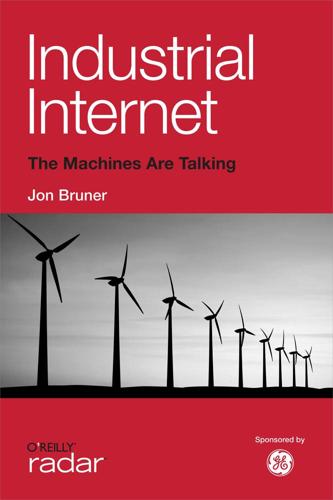
Industrial Internet
by
Jon Bruner
Published 27 Mar 2013
This could lead to the separation of markets in machines and in controls: buy a car from General Motors and buy the intelligent software to optimize it from Google. Manufacturers and software developers will need to think in terms of broad platforms to maximize the value of both their offerings. Ultra-transparent markets replace regulation The electricity market balances supply and demand on sub-second intervals, but data constraints prevent it from being truly transparent. As a result, efforts to reduce electricity demand (and its consequent impact on the environment) have typically been regulatory — mandating the phase-out of incandescent lightbulbs, for instance.

Virtual Competition
by
Ariel Ezrachi
and
Maurice E. Stucke
Published 30 Nov 2016
When faced with the complex options of base ser vice fees, additional features and cost for usage overages, customers tend to choose plans that greatly exceed their requirements, significantly overpaying each month rather than risking the chance of occasional overage costs. The Rise of “Almost Perfect” Behavioral Discrimination 109 Problems navigating the telecommunications industry are not limited to older adults, although they may be particularly vulnerable.39 Similarly, another recent study found that a greater variety of price plans in U.K. electricity markets led more consumers to choose suboptimally, harming their welfare.40 Consumers may find it difficult to accurately compare the true cost of a deal by one energy provider with that of another. Indeed, the U.K. Competition and Markets Authority (CMA) noted that the fundamental characteristics of energy consumption presented two barriers to consumers’ engagement with the retail energy market: (1) the absence of a quality measurement for the differentiation of energy, which may “fundamentally reduce consumers’ enthusiasm for, and interest in, engaging in the domestic retail energy markets, leading to customer inertia”;41 and (2) the fact that the information contained in conventional meters is not immediately accessible.
…
Parliament Energy and Climate Change Select Committee, Protecting Consumers: Making Energy Price Comparison Websites Transparent (March 26, 2015), http://www.publications.parliament.uk /pa/cm201415 /cmselect/cmenergy/1145/114502.htm. 38. In its submission to the committee, the U.K. Office of Gas and Electricity Markets noted that the level of commission charged by price comparison websites does not impact the actual price that the consumer pays when switching. As noted in the government response, “the cost a consumer will pay on a tariff is the same regardless of whether they switch through a comparison site or directly through the supplier, it is difficult to see how consumers would benefit this requirement.”
…
See Price discrimination Digital Eye collusion scenario, 37, 71–81; enforcement challenges and lack of anticompetitive intent, 77–80; “God View” and real-time data processing, 72–75; self-learning algorithms and autonomous pricing decisions, 74–77, 78 Digitized hand: competitive prices and questions of regulations, 205–217; replacing of invisible hand of competition by, viii, 27, 203 Disconnect app, 179–180, 184–186, 187, 239 Discrimination, blurring with behavioral discrimination, 124–127, 129 “Do Not Track” browser features: Facebook and, 173; Google and, 186; proposed policy for, 172; Target and, 92 Drip pricing, behavioral discrimination and, 109–110 Driverless cars, Frenemy dynamics and Uber, Apple, and Google, 151–155 DuckDuckGo, 157, 200 Dynamic and allocative efficiencies, of online markets, 7–8 Dynamic pricing: hub and spoke collusion scenario, 47–52; online advantages over brick-and-mortar stores, 13–14; price discrimination and, 87–88, 112 Economist, The, 106, 238 Efficiencies, of online markets, 7–8, 50 Efficient markets hypothesis, 207–208. See also Neoclassical economics Einstein, Albert, 220 Electricity markets, in U.K., complexity of pricing and, 109 Electric shock experiments, 43–44 Energy and Climate Change Select Committee, in U.K., 138, 142 Energy costs, in U.K., 141–142, 307n36 Enforcement issues, 218–232; behavioral discrimination and, 127–128, 219, 221, 300n47, 301nn48,50, 302nn55,56; challenges, 219–224; Digital Eye and, 77–80; Frenemy scenario, 221–222; hub and spoke collusion scenario, 52–55; intervention timing and methods issues, 223–224; predictable agent collusion scenario, 65–69, 279n31, 280nn39,41; problem not seen, 219–220; self-learning algorithms, 223; tacit collusion, 65–69, 219, 221, 279n31, 280nn39,41; tool framework proposals, 225–231; tools available, but with challenges, 222–223; tools lacking, 220–222 Epstein, Robert, 198 Ericsson, 148 Ethyl Gasoline Corporation v.

Conspiracy of Fools: A True Story
by
Kurt Eichenwald
Published 14 Mar 2005
The small crowd gathered at the San Diego offices of Science Applications International Corporation, eager to witness a little history. It was September 23, 1996. Right on schedule, Pete Wilson, California’s governor, emerged and took a seat at a table stacked with papers. After years of debate and fighting, Wilson was about to sign Assembly Bill 1890, the opening salvo for deregulation of California’s electricity markets. New players would be allowed into a power system that for years had been dominated by a small group of utilities. This was a moment to remember, Wilson told the crowd. “We’re doing more than signing a new law; we are shifting the balance of power in California,” he said. “We’ve pulled the plug on another outdated monopoly and replaced it with the promise of a new era of competition.”
…
Lay had heard lots of speculation about her favored status but considered it a corporate myth. He thought Mark showed talent in international. But operations weren’t her strong point. Enron’s backbone was still the pipelines, and she knew little about that. She wasn’t deeply knowledgeable about domestic gas and electricity markets, either. In short, she didn’t have a shot at number two. Lay did have a fallback lined up: Forrest Hoglund, head of Enron’s oil-and-gas division. A longtime Exxon executive, Hoglund impressed Lay, who had long ago told directors that if he was ever hit by a truck, Hoglund would be the best person to run the place.
…
It concluded that there was “enough evidence” of questionable trading behavior to warrant an investigation. Davis forwarded the information to the state’s attorney general, Bill Lockyer, whose staff was already on the case. Weeks before, they had opened the first investigation into possible manipulation in the California electricity markets. That day, rows of Mercedeses, Lexuses, and other pricey cars jammed the streets outside of the Four Seasons Hotel in Philadelphia. A frustrated doorman shouted at a driver to make room for the luxury autos boxed in by the traffic. The Republican National Convention had come to town, and the excitement was palpable.
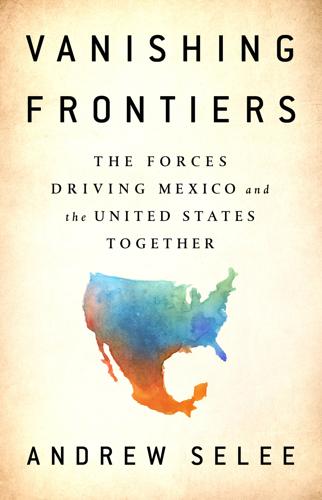
Vanishing Frontiers: The Forces Driving Mexico and the United States Together
by
Andrew Selee
Published 4 Jun 2018
But the energy reform gave a huge boost to these efforts because it provided security to investors that the gas in the pipelines would find a market on the Mexican side of the border. Today, CFE still buys most of the natural gas coming across the border, but private companies in Mexico can also buy gas directly from American producers, and that’s likely to become a bigger part of the electricity market in the future. The capacity of natural gas pipelines crossing the border nearly doubled from 2011 to 2016, and experts expect it will double again by 2018. Sixteen pipelines currently cross the border, another four pipeline projects are under construction, and two more are in the planning stages for a total of 3,300 new miles of pipeline between the two countries expected by 2020.
…
When Hunter Hunt, president and co-CEO at Hunt Consolidated Energy, decided in the late 1990s to develop a new electric utility in South Texas, near the city of Mission, he wasn’t thinking about the possibility that one day that utility would turn into an important cog in the integration of the cross-border electricity markets between Texas and Mexico. His goal was more pragmatic. He and his siblings, who started Sharyland Utilities, simply wanted to increase the reliability of electricity generation in a region that had traditionally suffered from underinvestment on both sides of the border. Tying the electrical grids on both sides of the border together was just a practical measure to make sure that when there was a lack of electricity supply on one side of the border, they could pull on electricity from the other side.
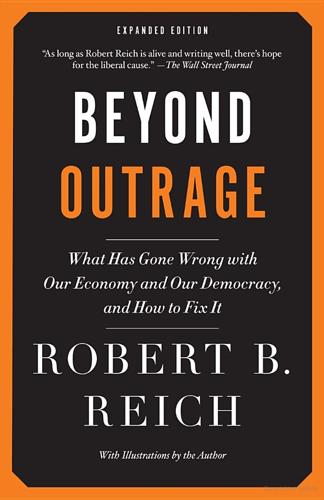
Beyond Outrage: Expanded Edition: What Has Gone Wrong With Our Economy and Our Democracy, and How to Fix It
by
Robert B. Reich
Published 3 Sep 2012
Meanwhile, government regulators who are supposed to protect the public too often protect the profits of big companies that supply regulators with good-paying jobs when they retire from government and that give key members of Congress fat campaign contributions when they run for reelection. Consider the safety of nuclear reactors. General Electric marketed the Mark 1 boiling-water reactors that were used in Japan’s Fukushima Daiichi plant as cheaper to build than other reactors because they used a smaller and less expensive containment structure. The same design is used in twenty-three American nuclear reactors at sixteen plants. But are Mark 1 reactors safe?
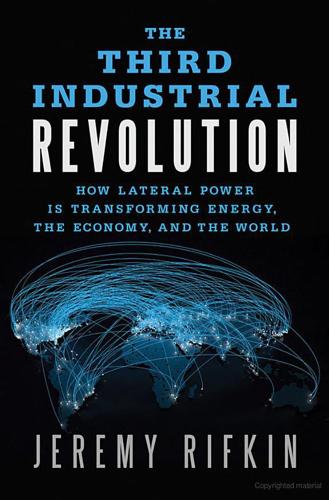
The Third Industrial Revolution: How Lateral Power Is Transforming Energy, the Economy, and the World
by
Jeremy Rifkin
Published 27 Sep 2011
Still, in the thirty-nine countries that have the potential to meet 100 percent of their electricity needs with geothermal energy, only nine have developed any significant installed power.18 While the United States leads in the amount of installed geothermal power, with power plants producing 3,086 megawatts, there is still huge untapped potential. An MIT study estimates that a modest investment of $300 to $400 million over fifteen years would make geothermal power generation competitive in the US electricity market. With a public and/or private investment of $800 million to $1 billion over the same fifteen-year time period, the MIT panel estimates that geothermal power could produce more than 100,000 megawatts of commercially available power by 2050.19 Biomass is the final slice of the growing green energy mix and includes fuel crops, forestry waste, and municipal garbage.
…
The potential new business opportunities would eventually exceed their conventional business of simply selling electrons. The young upstarts got a boost for their vision from an unlikely source. Neelie Kroes, the EU commissioner responsible for competition policy, dropped a bombshell on the power and utility sector in early 2006. Deregulation of the electricity market had allowed a handful of national power and utility giants to spread their wires across borders and buy smaller players. The European Commission was becoming increasingly concerned over the ability of a few mega power and utility companies to control access to markets by monopolizing both the supply and distribution of power.

Power Hungry: The Myths of "Green" Energy and the Real Fuels of the Future
by
Robert Bryce
Published 26 Apr 2011
But as the wind turbines are added to ABC’s grid, they reduce the gas turbines’ utilization rate and make them less efficient from a capital standpoint. And somehow, somewhere, consumers will have to pay for that inefficiency. This problem was discussed in a July 2009 report by Pöyry, a Helsinki-based consulting firm. In an analysis of how the variability of wind power will affect the British and Irish electricity markets, Pöyry concluded that new power plants designated to back up wind power “will have to operate at low, and highly uncertain loads, and under the current market arrangements the likely returns [on capital] do not appear good.” The report goes on to say that revenues from any backup generation “will be volatile and uncertain to the point where a plant may only operate for a few hours one year, and then some hundreds the next.
…
For current wind generation information, see: bpa.gov, especially http://www.transmission.bpa.gov/business/operations/wind/baltwg.aspx. 3 Cameron Walker, “Blowout,” Outside, August 2007, http://outside.away.com/outside/destinations/200708/dams.html. 4 Robert F. Kennedy Jr., “How to End America’s Deadly Coal Addiction,” Financial Times, July 19, 2009, http://www.ft.com/cms/s/0/58ec3258-748b-1 1de-8ad5-00144 feabdc0.html. 5 Pöyry, “Impact of Intermittency: How Wind Variability Could Change the Shape of the British and Irish Electricity Markets,” July 2009, http://www.ilexenergy.com/pages/documents/reports/renewables/Intermittency%20Public%20Report%202_0.pdf, 23. 6 International Energy Agency, “Natural Gas Market Review 2009,” 114. 7 Ibid. 8 “Colorado: Incentives/Policies for Renewable Energy,” n.d., http://www.dsireusa.org/incentives/incentive.cfm?

Capitalism 4.0: The Birth of a New Economy in the Aftermath of Crisis
by
Anatole Kaletsky
Published 22 Jun 2010
Usually, no one could discover such evidence of market failures. And when market failures such as lack of competition were discovered, the solutions were elaborate and cumbersome, such as auctioning new capacity and introducing financial derivatives into electricity markets. In practice, these efforts to correct textbook market failures have often made things worse—for example, investment in research and technology has fallen even further where electricity markets have been liberalized. This approach will change radically in the coming years. The inference will be that research, development, and the deployment of new nonpolluting energy sources may require far greater levels of public support.

Culture and Prosperity: The Truth About Markets - Why Some Nations Are Rich but Most Remain Poor
by
John Kay
Published 24 May 2004
The difference between the minimum price a seller would accept and the market price is called economic rent. It is consumer surplus that makes us happy, and economic rent that makes us rich. I will return to consumer surplus in chapter 19 and economic rent in chapter 25. The trading arrangements in the electricity market were invented by a government that set out to create a market structure where none had existed before. It is rare for markets to evolve in this way. The oil Culture and Prosperity { 145} Box 12.1 ECONOMIC RENT A country like Saudi Arabia derives substantial economic rent from its oil supplies because the market price is so far above the cost of Saudi production.
…
The nuclear power stations initially remained in public ownership; the AGRs (see chapter 9) were sold in 1996. 9. See Brunekreeft (1997). 10. The National Grid continues to operate a central control room, which assures continuity of supply while bids and offers determine the associated financial settlements. Analogous arrangements are found in all other electricity markets. 11. Prices were raised in 1974 to levels that equate to $20 per barrel (in 2002 dollars). 12. The most famous Dutch flower market, at Aalsmeer, operates quite differently, with a clock and an auction mechanism. The "Dutch auction" is different from the "English auction," used for Dr. Gachet. 13.
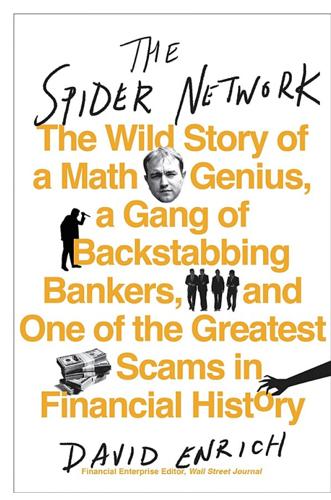
The Spider Network: The Wild Story of a Math Genius, a Gang of Backstabbing Bankers, and One of the Greatest Scams in Financial History
by
David Enrich
Published 21 Mar 2017
Like Gensler a Maryland native and math whiz, Youle had always wanted to be a professor. But now that he was on that career path, he was struggling mightily to choose a topic for his doctoral thesis, a subject to which he would devote the next couple of years—if not more—of his life researching. His initial idea had been to look at competition in the Texas electricity markets. His thesis adviser, an economist named Patrick Bajari, told him that sounded dull. How about pursuing something related to banking? The industry was in the throes of a nasty crisis—surely there were sexy topics to explore. So Youle, not knowing where to begin, embarked on a needle-in-a-haystack search for a topic.
…
252–53 Soros, George, 155, 280 South Africa, 170–71 Southwark Crown Court, 401, 420–22, 452–53, 455–56 Southwestern Bell, 113 Soviet-Afghan War, 40 Spencer, Michael, xi, 49–50, 395 Christmas party, 121–22 early banking career of, 40–41 early life of, 39–40 education of, 40 at ICAP, 41, 49–50 update on, 445 “spider network,” 6, 349 Spratling, Gary, xiii, 316, 317–19, 323–25, 400 Springsteen, Bruce, 423 squawk boxes, 82, 129 Star Wars: The Force Awakens (movie), 412 Stellmach, William, xiii, 323–25, 400 Stenfors, Alexis, xi, 119–22, 163 background of, 119–20 “mismarking” books, 214–17 switch trades, 170 update on, 447–50 Stenfors, Maria, 214–16 Stewart, Jon, 358 Stewart, Rod, 152–53, 154, 209 Storey, Miles, xi, 80, 206 Strachan, Gordon, 320 Structured Note Market, The (Peng), 186 structured notes, 185–87 “Study Casts Doubt on Key Rate,” 196–98, 201–2 Sugar House apartment, 320, 328, 363 Summers, Larry, 21–22 SunGard, 58–59 Supreme Court, U.S., 267n Swiss Bank Corporation, 81, 83 switch trades, 169–77, 399 syndicated loans, 27–28 T. Rowe Price, 247 Taibbi, Matt, 157 Tamura, Naomichi, x, 145–46, 290, 445 Tan, Stantley, 276–77, 281–82, 291–92 TARP (Troubled Asset Relief Program), 164–65, 187, 212, 230 Tchenguiz, Robert and Vincent, 332 Team America: World Police (movie), 90 Texas A&M University, 184 Texas electricity markets, 250 Thailand, 115–17, 224 Thatcher, Margaret, 15, 41, 70, 331 Thomson Reuters, 72, 76, 222 Thursfield, Andrew, x BBA meetings, 78 Citigroup Libor submissions, 276–77, 295 first meeting with Hayes, 258–61, 260n Libor, 79, 192, 244, 245–46, 246n Libor trial, 405–6 update on, 445 Tibor, 92, 93–94, 113–14, 269–70, 278 Tighe, Emma, 140, 154, 218, 365, 384, 388 Tighe, Karen, 153–54, 167, 306 Tighe, Sarah Alykulov telephone call, 329–30 cancer of, 381 Citigroup’s firing of Hayes, 303–4, 305–6, 313–14 Citigroup’s investigation of Hayes, 298–99, 300–301 first meetings with Hayes, 137–41 Hayes arrest, 364–65, 367–69, 370 Hayes car accident, 394 Hayes diagnosis, 413–314 Hayes hiring of lawyer, 347–49 Hayes job offers, 213, 230, 231 Hayes prison term, 451–52 Hayes trial, 410–11, 414–16, 419–20, 428–29, 430, 437–38, 443–44 at Herbert Smith, 161, 217–18 honeymoon with Hayes, 307 marriage proposal of Hayes, 209–10 move to Tokyo, 153–55 Old Rectory home, 337–38, 363–64 pregnancy and birth of Joshua, 328, 330, 337 relationship with Hayes, 147–48, 152–55, 167–68 resignation of, 455 SFO investigation, 383–84, 388–89 vacations with Hayes, 160–61, 224, 285–86, 319–20, 402–3 wedding to Hayes, 265, 305, 306–7 Time (magazine), 33 Title X Technology, 360 Tokyo Dome Bowling Center, 93 traders, 17–22, 41–43, 146–47 derivatives and, 31–35 “entertainment” and broker commissions, 50–53 ethos, 23–24 role of luck, 59 Tradition Financial Services, 52–53, 128–29 Treasury Department, U.S., 247–48, 357 Trivedi, Harsh, 351–54 Troy (movie), 237, 459 tulip mania, 32 Tullett Prebon brokers, xii.
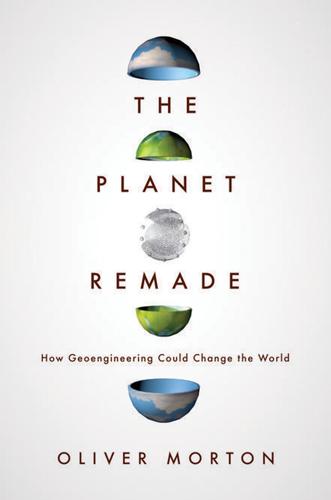
The Planet Remade: How Geoengineering Could Change the World
by
Oliver Morton
Published 26 Sep 2015
Such targets imply that emissions will be reduced by 4 per cent every year for 40 years. For comparison, when France converted its electricity infrastructure almost entirely to nuclear power between 1970 and 1995 it managed a reduction in emissions of just one per cent a year. Britain’s ‘dash for gas’, a large-scale shift away from coal that followed the liberalization of the electricity market in the 1980s, reduced emissions by the same rate in the 1990s. America’s dramatic shift to greater natural-gas use in response to the shale-gas revolution of the past decade has led to emissions reductions on a rather smaller scale. There are very few precedents for 4 per cent year-on-year emission reductions that don’t also involve an economic collapse – and they can only last for so long.
…
Germany’s current Energiewende, a national policy which aims to cut carbon-dioxide emissions from the power sector drastically while at the same time retiring all of the country’s nuclear plants, seems set to find out how far such subsidy approaches can go; they have cost well over 100 billion euros to date. In general, few economies have wind, solar or biomass supplying much more than 20 per cent of their electricity market (the same sort of level, possibly coincidentally, that has been achieved in the other push-not-pull attempt at an energy transition – that of nuclear power). That’s a large enough fraction to transfer a significant amount of money to the builders and buyers of wind turbines and solar. But it is not enough to change the course of the planet’s climate.

Adam Smith: Father of Economics
by
Jesse Norman
Published 30 Jun 2018
So the basic recipe can be as simple as: create lots of different products that are hard to compare with each other; separate out those customers that can find the best deals from the much larger number that cannot; and raise prices for the latter. Ignore any relevant traditions or ethos of public service, brush off the inevitable opprobrium and consumer complaints, and encourage regulators and the press to blame consumers for being insufficiently active. Then enjoy large profits. The UK’s retail electricity markets are a case in point. A third tier consists of more traditional products and services that digital technologies are rendering less intelligible, and so potentially more harmful, to consumers. Take Volkswagen, for example, a company that made its name as a mass manufacturer of cars for the people, as its name implies.
…
For a pioneering analysis see Jonathan Haskel and Stian Westlake, Capitalism without Capital: The Rise of the Intangible Economy, Princeton University Press 2017 ‘Competition is for losers’: Peter Thiel, Wall Street Journal, 12 September 2014 Effects of information and choice overload, especially on the poor: see Sendhil Mullainathan and Eldar Shafir, Scarcity: The True Cost of Not Having Enough, Allen Lane 2013 Consumer detriment from UK retail electricity market: UK Competition and Markets Authority, Energy Market Investigation: Final Report, 24 June 2016 Volkswagen scandal: see Frank Dohmen and Dieter Hawranek, ‘Collusion between Germany’s Biggest Carmakers’, Der Spiegel, 27 July 2017, and Jack Ewing, Faster, Higher, Farther: The Inside Story of the Volkswagen Scandal, Bantam Press 2017 Limits of competition policy: recent arguments, and disparate US and EU views, are explored by John Vickers in ‘Competition Policy and Property Rights’, Economic Journal, 120.544, 2010 Hidden costs of price comparison websites: see e.g.
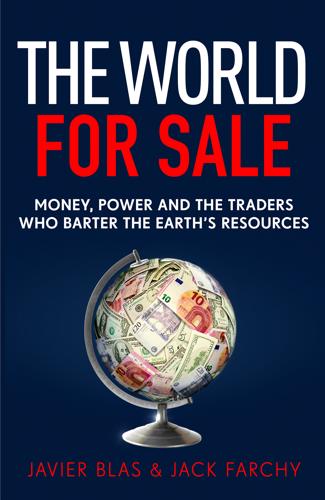
The World for Sale: Money, Power and the Traders Who Barter the Earth’s Resources
by
Javier Blas
and
Jack Farchy
Published 25 Feb 2021
I can give you a list of countries, but you know where they are.’ 51 For some traders, surviving the 1990s meant going to ever more adventurous corners of the globe; for others it meant taking more dubious steps. The era’s single most aggressive driver of consolidation was neither a trader nor an oil major. It was a company that had started life as a staid pipeline company, but went on to surf the liberalisation of gas and electricity markets to become one of the world’s largest commodity traders: Enron. Throughout the 1990s, Enron had been an all-consuming force in the trading industry, hoovering up bright young traders and buying up rival trading companies, redefining how a trading company could behave, and redrawing the commodity markets themselves.
…
‘The use of renewables will go up and eventually electric cars will take over significant chunks of the market.’ 41 Climate change needn’t be a wholly negative story for the commodity traders. The shift towards electric vehicles, for example, is triggering a massive expansion in the markets for cobalt, lithium and nickel, used to make batteries. It’s also likely to make the electricity market more interesting for the traders. Nonetheless, it’s tough to see how those markets will replicate the billions of dollars the commodity traders currently make each year from trading oil. Finally, the traders have become victims of their own success. The industry’s tentative move out of the shadows, epitomised by the Glencore IPO, has laid out the traders’ enormous profits for all to see.
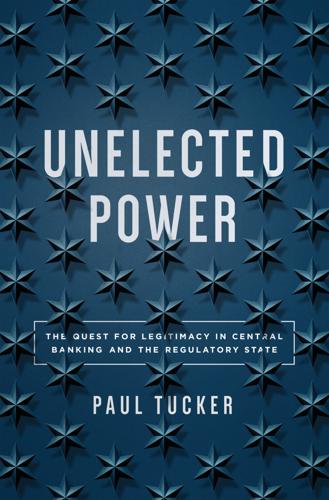
Unelected Power: The Quest for Legitimacy in Central Banking and the Regulatory State
by
Paul Tucker
Published 21 Apr 2018
Another strand, gaining traction after Bank of England independence in 1997, sought improved performance by insulating some (constrained) policy choices from politics. This saw the creation of a slew of independent regulators, including those that survive today as the Office of Communications (Ofcom), Office of Gas & Electricity Markets (Ofgem), Competition and Markets Authority (CMA), and Financial Conduct Authority (FCA). Each, among other things, an economic and competition regulator (chapter 3), they have high degrees of formal independence. Initially, a common thread was that goals would be set by politicians for single-purpose agencies, which would deliver under performance-measurement contracts: the model used at the end of the 1980s for the Reserve Bank of New Zealand.
…
See also Republicanism New Deal, 13, 28–29, 30n14, 34, 93n4, 94, 100n17, 303, 343, 553 New Freedom campaign, 168 New Public Management (NPM), 37, 121, 350, 456 New Zealand, 37–38, 295n3, 343n19, 350, 417, 427 Nixon, Richard M., 93n4, 140, 405, 408 Nolan Principles, 368n36 nondelegation doctrine: administrative state and, 337; canons of, 336; Chevron and, 338–39; hierarchical objectives and, 347–48; independent agencies and, 334–48; secondary legislation and, 342–44; statutory interpretation and, 337–40; trustees and, 340–41; United Kingdom and, 342–47; United States and, 334–42 nonmajoritarian institutions, 14, 75, 96, 242, 260, 298, 381 nonneutrality, 530–33 Norman, Montagu, 158, 237n4, 391, 430–31, 544 normative expectation, 112, 214, 479, 561 North, Douglas, 307 Noyer, Christian, 42–43, 300 Obama, Barack, 30, 381 Odysseus, 223 Office of Budget Responsibility, 95 Office of Communications (Ofcom), 37, 39n37, 318–21, 344n22, 346, 353, 363n26 Office of Gas & Electricity Markets (Ofgem), 37–38, 39n37, 62, 319, 346 Office of Information and Regulatory Affairs (OIRA), 30n12 Office of Management and Budget, 30 Okun, Arthur, 58n11, 63n21 Olson, Mancur, 65n24 only game in town, 4–5, 17–18, 525, 527, 535–38 open market operations (OMOs), 485 Operating Principles, 110, 115–16, 354–55, 476, 510, 571 ordo-liberalism, 136, 164, 168, 188, 255, 257n25, 327, 379, 507 Organisation for Economic Co-operation and Development (OECD), 25, 86n21, 283 Ostrom, Elinor, 59n15, 469n11 Overend Gurney, 512 overlapping consensus, 162n25, 280 overmighty citizens: accountability and, 539–40; balance-sheet policy and, 526, 533n12, 534–35; central banks and, ix–x, 8, 18, 22, 53, 129, 245–51, 292, 351–52, 402, 527, 538–40, 568; competition policy and, 539; consensus and, 531–33, 540; courts and, 541–43; democratic values and, ix–x, 538–40, 568; elitism and, 540; executive branch and, 532; Federal Reserve and, 539; interest rates and, 526–27, 529, 533, 535; internationalism and, 394, 398–402; judges and, 541–42; legitimacy seekers and, 402; as lender of last resort (LOLR), 435–36, 443, 447–54, 460, 485, 497, 503–17, 521, 566n17; liquidity and, 400, 526, 535; monetary policy and, 525–39, 542–43; monetary regimes and, 396–98; multiple-mission constraints and, 246; political economy and, 391, 527–34; power and, ix–x, 8, 18, 22, 53, 245–51, 292, 351–52, 391–403, 527, 538–40, 568; Principles for Delegation and, 245–51; regulatory state and, 525–26, 534–35, 538, 540, 542; Republican liberalism and, 245–51; robber barons and, 292; social costs and, 531–34; soft power and, 527; stability and, 526, 528, 532–34, 537–40, 544; United Kingdom and, 351; veto points and, 408–11 override: central banks and, 452, 467, 475, 520, 523; credibility and, 231, 234, 420; European Union (EU) and, 331–32; independent agencies and, 125–26; insulated agencies and, 277; monetary regimes and, 427; power and, 125–26, 135, 137, 231, 234, 241, 277, 315, 318, 320, 323–25, 331–32, 420, 427, 452, 467, 475, 520, 523, 570; Principles for Delegation and, 135, 137, 241, 315, 318, 320, 323–25, 331–32, 570; United Kingdom and, 318 oversight issues: accountability and, 262–74, 366–67 (see also accountability); Bank of England and, 368n36, 370, 373–74; committee overload and, 375–76; consensus and, 370, 373; courts and, 369; Design Precepts and, 366, 372, 377; elected executive and, 368n36, 375; elitism and, 369; European Central Bank (ECB) and, 370, 373; European Union (EU) and, 330–31, 368n37; executive branch and, 366–67; feasibility of political oversight and, 367–69; Federal Reserve and, 374–75; France and, 368n37, 369; Germany and, 369; Great Financial Crisis and, 380; impediments to, 370–76; independent agencies and, 366–75; inflation and, 374; iron triangles and, 370–71; judiciary and, 366; legal issues and, 350–51, 366–75; legislature and, 367, 373; legitimacy and, 370, 373, 375; monetary independence and, 395; monetary policy and, 368n36, 370, 373–75; Nolan Principles and, 368n36; police-patrol vs. fire-alarm, 371–72; public debate and, 372–73; public interest and, 371; regulatory state and, 368; representative democracy and, 373; Republicanism and, 262–64; stability and, 368n36, 370, 376–77; technocracy and, 366; United Kingdom and, 350–51, 368, 373–75; United States and, 367, 371–75; values compatibility and, 368 Paine, Thomas, 224n6 panic, 28, 199, 433, 441, 506, 515, 517 Pareto improvement, 53–57, 64, 66, 101, 105, 249 parsimony, 429–30, 432, 490–91, 500–2 participation: agency policy making and, 215–17; citizen’s right of, 567; communitarianism and, 165, 167; credible commitment and, 221, 227–29, 233; democratic values and, 242, 251, 356; European Union (EU) and, 304, 324n38; fiscal state and, 501; incrementalism and, 228–29; independent agencies and, 197–98; legitimacy audiences and, 161; limits to, 261–62; power and, 1, 14; public, 161, 198, 219, 221, 233, 251, 253, 257–58, 261, 267, 304, 359, 377; as substitute for representation, 203, 210 participatory democrats, 203, 267, 554 Paul, Ron, 32, 201 Penelope, 223 performance-measurement contracts, 38 Pettit, Philip, xi, 107n25, 111, 155n12, 168, 266n38, 270n40 Phillips, Lord, 190 Pigou, Arthur, 60, 67.
…
, The” (Volcker), 431 Truman, Harry, 80 Trump, Donald, 141, 364n31 trustees: administrative state and, 72, 81–92; agency hierarchies and, 83–85; as agents, 87–89; Burkean, 211–13; central banks and, 439, 449–52, 461, 472, 515, 517, 529, 543; constitutionalism and, 277–78; credibility and, 234, 419, 421; democratic values and, 554, 563, 567; guardians and, 81–83; hierarchy of, 290–92; independent agencies and, 100n15, 101, 103, 108–18, 124–26, 192, 204, 208, 211–14, 340–41, 347; insulated agencies and, 277–78, 286, 289–92; job completion and, 277; judiciary and, 81–83; nondelegation doctrine and, 340–41; power and, 11, 15–19, 380, 394–98; Principles for Delegation and, 127, 130, 144, 254, 267, 269, 307, 315, 323; Promissory Oaths Act and, 81n11; stability and, 449–52 Turner, Adair, 142 UK Supreme Court, 190, 319, 338 UK Treasury, ix, 10, 78, 130, 136, 326n32, 351n4, 374, 387, 407, 426, 465, 493n16, 508, 516, 523, 539 undemocratic liberalism, 3, 47, 196, 211, 218, 524, 555 United Kingdom: accountability and, 38–41, 301–2; administrative state and, 37–41; advisory committees and, 353; appeals and, 362–64; Banking Act of, 365; Bill of Rights of, 12; Blair and, 2, 252; Brexit and, 136n8, 368n37, 483; Brown and, 252; Chancellors of the Exchequer and, 40, 387, 426n1, 509; casual/relaxed about power, 39, 320–21; Churchill and, 163, 205, 426, 430, 546, 564; Competition and Markets Authority (CMA) and, 38, 39n37, 319, 346n26; credible commitment and, 316–21; crisis management and, 41; democratic values and, 36; distributional effects and, 528; Domesday Book of property ownership and, 36; draft rules and, 354; East India Company and, 253, 548–49; emergency state and, 387; Financial Conduct Authority (FCA) and, 38, 39n37, 87, 141–43, 346; goal independence and, 427; Great Financial Crisis and, x–xi, 318, 346, 366, 387; have regards requirements and, 345–47; high policy and, 40–41; House of Commons and, 38–39, 142, 296–97, 300n12, 302, 316, 349, 363, 368, 375n44, 387, 427, 525, 529n5, 539, 543n23; House of Lords and, 39n37, 181n10, 296, 346n27, 543; iron triangles and, 371; Labour Party and, 2, 40, 252, 317, 366, 411–12, 509, 539; Legislative and Regulatory Reform Act and, 356; legitimacy and, 316–18; limits of Design Precepts and, 378–79; macroeconomic demand management and, 405–8; ministerial control and, 39–40; monetary regimes and, 426–28; multiple objectives and, 345–47; New Public Management (NPM) and, 37, 121, 350, 456; Nolan Principles and, 368n36; nondelegation doctrine for, 342–47; Office of Communications (Ofcom) and, 37, 39n37, 318–21, 344n22, 346, 353, 363n26; Office of Gas & Electricity Markets (Ogem) and, 37–38, 39n37, 62, 319, 346; operational independence and, 426–27; overmighty citizens and, 351; override and, 318; oversight issues and, 350–51, 368, 373–75; pluralism and, 294–97; Principles for Delegation and, 316–21; reordering constraints and, 319–20; rule of law and, 27, 356; secondary legislation and, 342–44; separation of functions and, 350–51; Strategic Policy Statements and, 344; Supreme Court of, 190; Thatcher and, 100n17, 368, 406, 411; Tories and, 40, 153n9, 252, 411–12; tribunals and, 362–64 (see also judges); vague objectives and, 342–47; veto points and, 309–10, 317, 409–11; Wars of the Roses and, ix–x, 568; Westminster system and, 38, 153, 179, 243n13, 253n21, 259, 273, 279n14, 297, 317–20, 342–47, 371–75, 387, 393, 405–6, 519, 539, 548, 552–53; Whigs and, 153n9 United Nations, 422 United States: administrative state and, 28–35; advisory committees and, 353; appeals and, 362–64; Chevron doctrine and, 338–39; constitutionalism and, 294–300 (see also constitutionalism); creating criminal offenses and, 313–14; credible commitment and, 308–16; Declaration of Independence and, 163; Dodd-Frank Act and, 384, 434, 476, 506, 516, 524; draft rules and, 354; emergency state and, 382–86; Federal Communications Commission (FCC) and, 232n14, 309n2, 336; Federalist Papers and, 163; Federal Reserve and, 15 (see also Federal Reserve); Federal Trade Commission (FTC) and, 28–30, 86, 110, 135, 137, 168; Great Financial Crisis and, 366, 375; immigration and, 74, 385; impediments to passing laws in, 338; Interstate Commerce Commission and, 28, 34, 237; iron triangles and, 371; legitimacy and, 339; limits of Design Precepts and, 378–79; monetary regimes and, 428; New Deal and, 13, 28–29, 30n14, 34, 93n4, 94, 100n17, 303, 343, 553; nondelegation doctrine for, 334–42; oversight issues and, 367, 371–75; pluralism and, 294–97; presidential vs. congressional control and, 310–13; Principles for Delegation and, 308–16; Progressive Era and, 28, 33; REINS Act and, 10, 33, 315, 344; resistance to delegation to agencies in, 551–53; right to pass laws and, 303–4; rule of law and, 357; September 11, 2001 terrorist attacks and, 35, 457n28; statutory interpretation and, 337–40; vague objectives and, 334–41; veto points and, 297, 308–10, 312–13, 317, 361; White House and, 29, 221, 310, 551 US Civil War, 28 US Constitution, 30n14, 32–33, 89, 224, 227n10, 253, 276, 341n16, 352n5, 361, 422, 551–52 US House of Representatives, 10, 33, 46, 179, 272, 315 US regulatory commission: conditions for delegating rule-writing authority, 233; not fully insulated, 80; partisan politics and, 110, 233 US Senate, 10, 29, 33, 45, 86, 181, 296–97, 302–3, 310–11, 324, 367, 522 US Supreme Court, 355, 363n26; Administrative Procedures Act (APA) and, 33; administrative state and, 29–33, 30n14, 35, 83n15, 89; Brandeis and, 168; Buckley v.
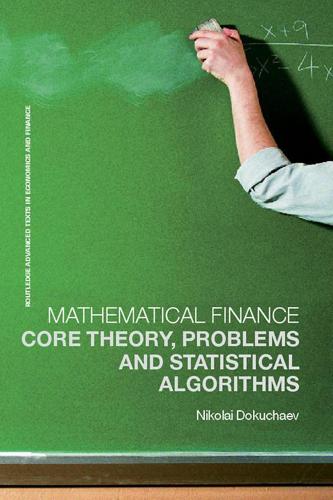
Mathematical Finance: Core Theory, Problems and Statistical Algorithms
by
Nikolai Dokuchaev
Published 24 Apr 2007
At this time T, the option holder obtains the amount of money equal to Fτ,θ(S0, S1,…, ST) (or obtains some benefits with this market price). Does this option belong to any of the classes described above? Remark 3.46 Note that the options described in Problems 3.44 and 3.45 may have economical sense. For instance, take and consider an electricity market, where St is the price of an electricity unit at time t. The corresponding option from Problem 3.44 gives the right to enter at any time τ a contract for buying an electricity unit every time t=τ, τ+1,…, T for a fixed price K; once started, the contract will continue up to time T without a possibility of early exit.
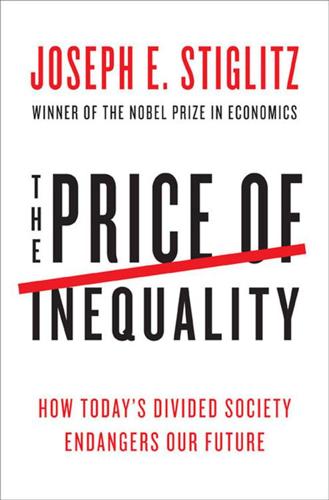
The Price of Inequality: How Today's Divided Society Endangers Our Future
by
Joseph E. Stiglitz
Published 10 Jun 2012
This also applies to liberalization initiatives, including the disastrous liberalization of electric power in California. Enron, one of the big advocates of the liberalization and an outspoken advocate of the wonders of the market (before it went down in 2001, the largest corporate bankruptcy ever recorded up to that point), manipulated the California electricity market to make millions and millions for itself, a transfer of money from ordinary citizens of that state to Ken Lay, its CEO, and the others who ran the company. Bush officials blamed the shortages that Enron had managed to create on excessive environmental regulation that discouraged new construction.
…
INDEX Abed, Fazle Hasan, 196 Acacia Research Corporation, 203 Accenture, 360 advertising, 147, 335, 348, 354 see also marketing affirmative action, 282 Afghanistan, 143, 176, 209, 211, 218 Africa, 23, 40 African Americans: discrimination against, 68, 69, 70, 71, 129, 303, 305, 308, 328, 367, 369 disenfranchisement of, 345, 349 wealth of, 13, 70, 71, 329, 384 agriculture: government subsidies in, 51, 64, 179, 180, 320, 326, 379 in Great Depression, 56–57, 231, 233 AIG, 35, 49, 67, 180, 253, 369 airlines, deregulation of, 317 air traffic controllers, 65 Alien Torts Statute, 59 Ally, 374 Alperovitz, Gar, 78 alternative minimum tax, 394 American Airlines, 318 American Tobacco Company, 317 Andreessen, Marc, 318 Angelides, Phil, 372 antiglobalization movement, xiii, 277 Apple, 203, 360 Arab Spring, ix–xi, xiv, 287 Archer Daniels Midland (ADM), 51, 320 Arnall, Roland, 333 Asia, 64, 157 financial crisis in, 61, 231, 352, 353 AT&T, 44, 203, 317 Atkinson, Anthony B., xxiii auction theory, 50 austerity, 207, 220, 221, 230–36 Australia, 5, 14, 18, 22, 135, 286 autoworkers, 67 balanced-budget multiplier, 217–18, 379 Bangladesh, microcredit schemes in, 196, 197 bankers: bonuses for, x, xiv, xv, 21, 79, 141, 169, 245, 247, 270, 319, 333, 363 criminal prosecution of, xvi, 70, 119, 199, 205–6, 372, 373 economic influence of, xxii–xxiii, 79–80, 240 private incentives of, 33, 34, 87, 90, 96, 109–10 risky behavior by, xi, xxiii, 37, 90, 101, 109, 171, 198, 239–40, 246, 247, 269, 270, 336, 387 see also corporations; financial markets; financial sector Bank of America, 70, 374 bankruptcy: corporate, 313 derivatives claims in, 49, 271 government regulation of, 30 personal, 10, 275, 301 reform of, 58 student debt in, 58, 94, 195, 196, 265, 271, 323, 371 see also Chapter 11; foreclosures bankruptcy law, 193–97, 201, 202, 270, 271, 284 Bardeen, John, 41 Bartel, Larry, xxiv Basov, Nikolay, 315 Bear Stearns, 388 Belgium, 19, 22, 286 Berlusconi, Silvio, 349 Bernanke, Ben, 247, 248, 252, 257, 389 Berners-Lee, Tim, 41, 315 Bhutan, 122, 312 Bilmes, Linda, 176 Bipartisan Policy Center, 207 Bischoff, Kendra, 75 BlackBerry, 203 Blankfein, Lloyd, 124 Bloomberg, Michael, xiv bondholders, 168, 240, 261 bonds, municipal, 212, 378 Bowles, Erskine, 207 Bowles-Simpson Deficit Reduction Commission, 207, 221, 379, 380 Brattain, Walter, 41 Brazil, 5, 51, 249 economic growth in, 139, 298, 353 Bridgestone/Firestone, 104 British Petroleum (BP), xviii, 99, 189, 190, 367, 374 “Buffett rule,” 395 Buffett, Warren, 77, 180, 269, 333, 395, 396 Burnham, Walter Dean, 130 Bush, George W., 71, 73, 86, 87, 97, 101, 114, 169, 177, 208, 212, 221, 228, 330, 360, 383 Bush administration, xiv, 167, 168, 171, 178 business: anticompetitive behavior in, 44–46, 317, 318 corruption in, 176 government partnerships with, 174 government regulation of, 47 innovations in, 35, 46, 41, 78, 96, 178–79, 314, 315 political power of, 47, 50, 51, 62, 95, 99, 101, 111, 131–32, 135, 136, 285, 286, 319, 325, 350 teamwork in, 113, 343 trust in, 121–22 see also corporations; financial sector business, small, 61, 167, 225, 226, 241, 245, 395 California, electricity market liberalization in, 177–78 campaign finance, 37, 47, 131–32, 135, 136, 162, 196, 200, 206, 285–86, 319, 325, 350, 373, 397 Canada, 5, 18, 19 capital, 59, 323 social, 122–23, 125, 135 capital controls, 60, 181, 182, 277, 353 capital gains, 71–72, 87, 88, 115, 211, 274, 297, 298, 315, 330, 361, 378, 395 Cardoso, Enrique, 5 Carter, Jimmy, 71 Cayman Islands, 270 cell phones, 98, 203, 274 Census Bureau, U.S., 27, 305 Central Intelligence Agency (CIA), 209 Chait, Jonathan, 19, 116–17 Chapter 11, 284, 313, 363 see also bankruptcy Chavez, Hugo, 40 Cheney, Richard, 101 Chicago school, 44–45, 47, 256, 317, 391 child care, 10, 301 Chile, 141, 258 China, 19, 54, 64, 249, 280 economic strength of, 144, 175 inflation in, 259–60 Citibank, 204–5, 369, 387 cities, community segregation in, 75–76 Citizens United v.

The Oil Factor: Protect Yourself-and Profit-from the Coming Energy Crisis
by
Stephen Leeb
and
Donna Leeb
Published 12 Feb 2004
As we detailed in our chapter on alternative energies, when it comes to wind energy, the technology already exists, and wind can generate electricity more cheaply than either coal or natural gas. This cost advantage virtually ensures strong growth in this market over the long haul. What’s keeping wind from making immediate massive inroads into the electricity market is the enormous investment in infrastructure required. If government were to assume a major role, as it did in creating the interstate highway system, growth in wind energy would explode. What does “major” mean? An investment in the hundreds of billions in today’s dollars would be comparable to what the federal government put into highways.

Internet for the People: The Fight for Our Digital Future
by
Ben Tarnoff
Published 13 Jun 2022
They are discovering the embryonic forms of an internet where the people rule. 3 The People’s Pipes In 1935, the residents of Chattanooga, Tennessee, were living in one of the poorest parts of the country in the middle of the Great Depression. Among the many things in distressingly short supply was electricity. Power, long available in the big cities, remained scarce in rural areas like the Tennessee Valley. This wasn’t an accident. Rather, it reflected a basic business logic. Private monopolies dominated the electricity market. This “power trust” was notorious for refusing to serve communities it didn’t consider profitable, and for price-gouging the ones it did. So Chattanoogans decided to take their power supply out of private hands. They voted overwhelmingly for a municipal bond issue that funded the creation of a city-owned electricity distribution system called the Electric Power Board.
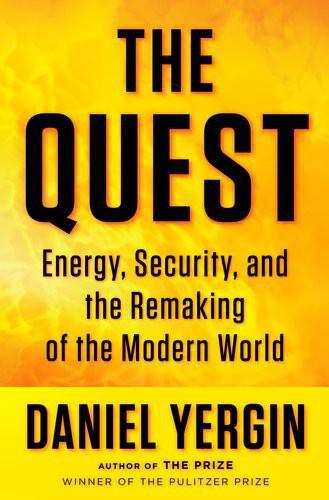
The Quest: Energy, Security, and the Remaking of the Modern World
by
Daniel Yergin
Published 14 May 2011
PJM has deep roots, going back to a power pool that was established between Pennsylvania and New Jersey in 1927 to bring greater stability in electricity supply to the region. Today PJM operates both the high-voltage transmission system in its region and a competitive wholesale market, bringing buyers and sellers together on a real-time basis. As for California, the state has kept its wholesale electricity markets open to competition. It now permits long-term contracts. In 2009, after several years of work, the state’s Independent System Operator (ISO) introduced a new market design. It incorporated experience from PJM and other systems as well as the painful lessons from what Mason Willrich, the chairman of the ISO, called the “flawed, flawed market” that had been put in place in California in the 1990s.
…
Sweeney, The California Electricity Crisis (Stanford, CA: Hoover Institution Press, 2002), pp. 120–22. 10 Interview with John Bryson; Fortune, February 5, 2001 (“madness,” “cannot run a business”). 11 Sweeney, The California Electricity Crisis, p. 132; Gray Davis, “California: State of the State Address,” January 9, 2001, on Web site of Democratic Leadership Council (“energy nightmare,” “price gouging,” “out-of-state profiteers,” “hostage,” “on sleep mode,” “brink of blackouts”). 12 James L. Sweeney, “California Electricity Restructuring, the Crisis, and Its Aftermath,” in Electricity Market Reform: An International Perspective, eds. Fereidoon P. Sioshansi and Wolfgang Pfaffenberger (Oxford: Elsevier, 2006), p. 331 (“untested system”); Sweeney, The California Electricity Crisis, p. 203 (“20 minutes,” “plunder”). 13 Sweeney, The California Electricity Crisis, p. 136 (“more electricity they sold”). 14 Sweeney, The California Electricity Crisis, pp. 224–26, 280; interviews. 15 Federal Energy Regulatory Commission, Report on Plant Outages in the State of California, February 1, 2001 (“did not discover”). 16 Houston Chronicle, March 22, 2007; Los Angeles Times, June 16, 2002 (for the traders).
…
The Price of Loyalty: George W. Bush, the White House, and the Education of Paul O’Neill. New York: Simon & Schuster, 2004. Sweeney, James L. The California Electricity Crisis. Stanford: Hoover Institution Press, 2002. ———. “California Electricity Restructuring: The Crisis and Its Aftermath.” In Electricity Market Reform: An International Perspective. Edited by Fereidoon P. Sioshansi and Wolfgang Pfaffenberger. Oxford: Elsevier, 2006. ———. “The California Energy Crisis.” Conference on Ethics and Changing Energy Markets. Notre Dame University. October 28, 2004. Talbott, Strobe. “A Farewell to Flashman: American Policy in the Caucasus and Central Asia.”

After the New Economy: The Binge . . . And the Hangover That Won't Go Away
by
Doug Henwood
Published 9 May 2005
But, fantasy aside, all the exotic instruments and strategies still depended on a troublesome physical world; to have the telecoms bandwidth to trade, Enron also built a big network to fulfill demand that was never demanded. It's not easy to overthrow matter if you're trying to make a profit. You can turn to creative accountants to help you out, but not forever. Almost the only real money Enron ever made was by manipulating California's electricity market during that state's 2001 blackout crisis, but that didn't last very long, and it wouldn't be a very inspiring case study for the Harvard Business School. Enron is also a fine illustration of the transformation over the last twenty years in how corporations are run. (There'll be more on this in chapter 5, but context demands a bit right now.)

Unhappy Union: How the Euro Crisis - and Europe - Can Be Fixed
by
John Peet
,
Anton La Guardia
and
The Economist
Published 15 Feb 2014
In its January 2014 proposals for new climate-change targets, the Commission suggested only that all EU members should aim to cut greenhouse-gas emissions by 40% by 2040; it dropped national targets for renewables, proposing only that the EU as a whole should push its share up to 27% on the same timescale.1 Energy policy more broadly has also suffered from neglect, in part because of the euro crisis. In 2009, shortly before it broke, the EU adopted a “third energy package” that envisaged a much tougher approach to liberalising gas and electricity markets, including separating production, transmission and supply (a process known as unbundling). Various regulations and directives to implement this package have since been adopted. And the Commission has also initiated competition proceedings against Gazprom, Russia’s energy giant. The Russians have been lobbying hard for changes to the third energy package.
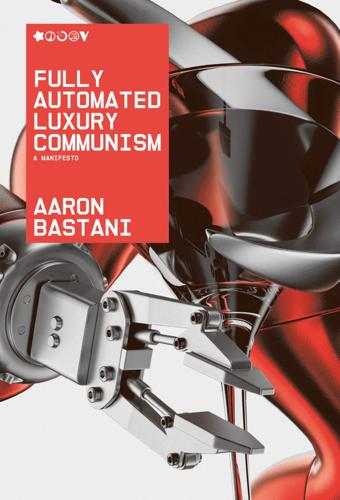
Fully Automated Luxury Communism
by
Aaron Bastani
Published 10 Jun 2019
‘We Have 12 Years to Limit Climate Change Catastrophe, Warns UN’. Guardian, 8 October 2018. Solar Energy: Limitless, Clean, Free Diamandis, Peter and Steven Kotler. Abundance: The Future Is Better than You Think. Free Press, 2014. A Quiet Revolution ‘Electricity Generation Mix by Quarter and Fuel Source (GB)’. UK Office of Gas and Electricity Markets, October 2018. Goodall, Chris. The Switch: How Solar, Storage and New Tech Means Cheap Power for All, Profile Books, 2016. Hanley, Steve. ‘New PPA in Arizona Locks in Lowest Solar Prices in US as Demise of Navajo Station Looms’. Clean Technica, 11 June 2018. McGreevy, Ronan. ‘Scotland “on Target” for 100% Renewable Energy by 2020’.
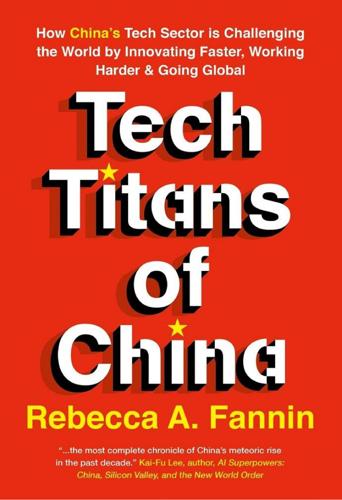
Tech Titans of China: How China's Tech Sector Is Challenging the World by Innovating Faster, Working Harder, and Going Global
by
Rebecca Fannin
Published 2 Sep 2019
He was arrested at San Jose Airport on his way to China, and Xpeng subsequently fired him. In another case involving a China autonomous vehicle company, Apple charged an engineer also leaving for China of stealing its driver-less car secrets.4 NIO in Road Race with Tesla From another corner of China’s fledgling electric market, premium maker NIO is coming on strong as a Tesla challenger with Star Trek-y looking cars and a starting price tag of around $70,000, much less than Tesla in China. The founder, William Li, has been called the Elon Musk of China. His company’s slogan is “Blue sky coming.” Tech-savvy Chinese customers can link their mobile phone to NIO and tap on a screen for repairs, maintenance, and quick power boosts by battery swapping and mobile charging vans.
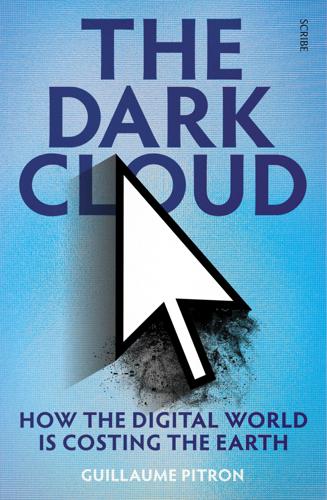
The Dark Cloud: How the Digital World Is Costing the Earth
by
Guillaume Pitron
Published 14 Jun 2023
B) 1526 Electric utility regulation; environmental goals, also known as the Virginia Clean Economy Act, passed in 2020. 71 ‘Netflix streaming – More energy efficient than breathing’, The Netflix Tech Blog, 27 May 2015. 72 Interview with Philippe Luce, 2020. 73 ‘Ensuring renewable electricity market instruments contribute to the global low-carbon transition and sustainable development goals’, Gold Standard, March 2017. 74 ‘Le numérique est-il source d’économies ou de dépenses d’énergie?’ [‘Is digital a source of energy savings or spending?’], Institut Sapiens, Paris, 6 July 2020. ‘Lean ICT: Towards Digital Sobriety’, The Shift Project, October 2018. 75 ‘Un mail est aussi énergivore qu’une ampoule allumée pendant une heure’ [‘An email uses as much energy as a light bulb on for one hour’], Le Figaro, 16 May 2019. 76 ‘Email statistics report, 2020-2024’, The Radicati Group, February 2020. 77 More on this topic: ‘Climate crisis: The unsustainable use of online video – The practical case study of online video’, Executive summary, The Shift Project, 2019. 78 Talk by Emmanuel Assié, founder and chairman of Webaxys, at the summer university of the E5T Foundation in August 2019.

How Capitalism Saved America: The Untold History of Our Country, From the Pilgrims to the Present
by
Thomas J. Dilorenzo
Published 9 Aug 2004
The more Americans come to understand the truth about capitalism, the more reason they will have to be optimistic for the future of their country. ———— NOTES INTRODUCTION: THE UNTOLD STORY 1. Adam Smith, An Inquiry into the Nature and Causes of the Wealth of Nations (New York: Random House, 1937), 422. 2. Neela Banerjee and David Firestone, “New Kind of Electricity Market Strains Old Wires Beyond Limits,” New York Times, August 24, 2003, 1. CHAPTER ONE: WHAT IS CAPITALISM? 1. Adam Smith, An Inquiry into the Nature and Causes of the Wealth of Nations (New York: Random House, 1937), 422. 2. Ludwig von Mises, Liberalism: In the Classical Tradition (San Francisco: Cobden Press, 1985), 32. 3.
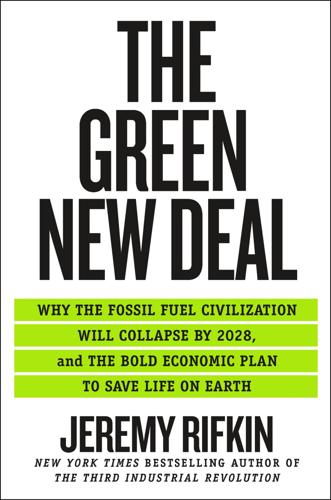
The Green New Deal: Why the Fossil Fuel Civilization Will Collapse by 2028, and the Bold Economic Plan to Save Life on Earth
by
Jeremy Rifkin
Published 9 Sep 2019
Brown et al., “Response to ‘Burden of Proof: A Comprehensive Review of the Feasibility of 100% Renewable-Electricity Systems,” Renewable and Sustainable Energy Reviews 92 (2018): 834–47; Ben Elliston, Iain MacGill, and Mark Diesendorf, “Least Cost 100% Renewable Electricity Scenarios in the Australian National Electricity Market,” Energy Policy 59 (August 2013): 270–82. 21. Kathryn Hopkins, “Fuel Prices: Iran Missile Launches Send Oil to $147 a Barrel Record,” The Guardian, July 11, 2008, https://www.theguardian.com/business/2008/jul/12/oil.commodities (accessed March 23, 2019). 22. Gebisa Ejeta, “Revitalizing Agricultural Research for Global Food Security,” Food Security 1, no. 4 (2018): 395, doi:10.1007/s12571-009-0045-8. 23.

Green Metropolis: Why Living Smaller, Living Closer, and Driving Less Are Thekeys to Sustainability
by
David Owen
Published 16 Sep 2009
But it’s not clear, yet, that they make sense even there. Some of the main difficulties behind the goal of decentralizing power production were enumerated in 2000 in an article in Electricity Journal by Nathanael Greene and Roel Hammerschlag, of the Natural Resources Defense Council. “Given the size of the electricity market, the range in emissions and the lack of regulation in this area,” they wrote, “there is clearly the potential for a literal thousand points of light to become a thousand points of soot. If just one half of one percent of the U.S. demand for electricity were met by uncontrolled diesel engines, the country’s annual nitrogen oxide emissions could increase by nearly five percent.”33 Lovins and other proponents of decentralizing power production aren’t promoting diesel generators, of course, but most of the small-scale, non-grid energy production in the United States actually is diesel-powered.

Ten Technologies to Save the Planet: Energy Options for a Low-Carbon Future
by
Chris Goodall
Published 1 Jan 2010
The book offers approximate figures for the cost of producing low-carbon energy using the new technologies that I write about in the following chapters. Unless you are an expert on the wholesale market for electric power, these figures won’t necessarily mean very much to you. As a very rough comparison, I looked at the prices in some of the main electricity markets on September 17, 2009, to provide a sense of how much fossil fuel generators obtain for their output. The cost to buy wholesale electric power in September varies greatly throughout the day, usually dropping to a low point in the early morning and then rising to a peak in the afternoon when demand is at its highest.

Climate Change
by
Joseph Romm
Published 3 Dec 2015
The key attribute of CSP is that it generates primary energy in the form of heat, which can be stored 20 to 100 times more cheaply than electricity, with far greater efficiency. Commercial projects have already demonstrated that CSP systems can store energy by heating oil or molten salt, which can retain the heat for hours. Both the U.S. National Renewable Energy Laboratory and the IEA have said that after solar photovoltaics makes a deep penetration into the electricity market, CSP may well become more valuable. That is because right now, solar PV generates electricity at the most valuable time—daily peak electricity usage in daytime, particularly during the summertime, when air conditioning becomes the big draw on electric power. However, once solar PV hits 10% to 15% of annual electric generation in a region, PV can become less valuable.
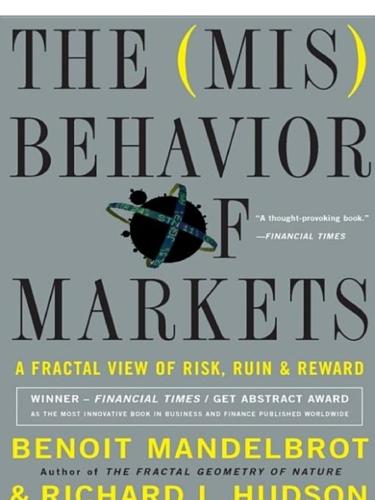
The Misbehavior of Markets: A Fractal View of Financial Turbulence
by
Benoit Mandelbrot
and
Richard L. Hudson
Published 7 Mar 2006
Picking up Hurst’s trail in the 1960s, I discovered the same “Nile pattern” in many other contexts—oddest of all, in how a stock price fluctuates. The Nile pattern is a crucial part of fractal geometry. Other researchers, broadening my work in recent years, have found it in international crude oil prices, London gold fixings, and the deregulated U.S. electricity market. Indeed, the Nile pattern provides the second major link in my theory of how financial markets work—a necessary complement to the first one about scaling laws and “fat tails” of the last chapter. Adding a third link in a later chapter, a comprehensive market model results. Good scientists are often circumspect in their formal, academicjournal utterances.

The New Harvest: Agricultural Innovation in Africa
by
Calestous Juma
Published 27 May 2017
Crucial policy innovations in this framework include the risk-free exchange of electricity between countries in the context of a transparent pricing agreement, and bind member states to help one another in the case of power system calamity to avert collapse. The West African Power Pool focuses on giving member states access to reliable and low-cost energy supplies from hydropowered and gas-fired plants. The West African Power Pool organization has been created to integrate the national power system operations into a unified regional electricity market—with the expectation that such a mechanism would, over the medium to long term, assure the citizens of ECOWAS member states a stable and reliable electricity supply at affordable costs.11 This will create a level playing field, facilitating the balanced development of the diverse energy resources of ECOWAS member states for their collective economic benefit, through long-term energy sector cooperation, unimpeded energy transit, and increased cross-border electricity trade.

Augmented: Life in the Smart Lane
by
Brett King
Published 5 May 2016
He says that in about the time it has taken cell phones to supplant land lines in most U.S. homes, the grid will become increasingly irrelevant as customers move toward decentralized homegrown green energy. “Why the U.S. Power Grid’s Days Are Numbered,” Bloomberg Businessweek, 22nd August 2013 Figure 2.3: How cheap can solar get? (Source: RamezNaam, EPIA, Electricity Markets & Policy Group) The CSIRO, Australia’s primary federal agency for scientific research, reported that by 2040 more than half of Australia’s electricity would be generated, and stored, by prosumers12 at the point of consumption. This would not just be led by household or rooftop solar, but by corporations.
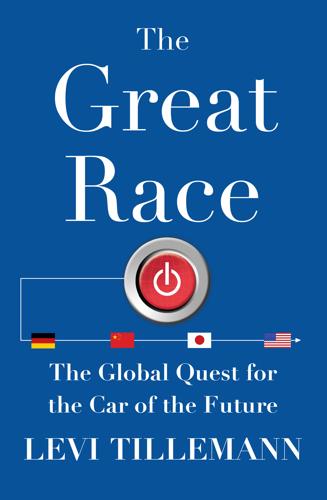
The Great Race: The Global Quest for the Car of the Future
by
Levi Tillemann
Published 20 Jan 2015
Lai Xiaokang, head of advanced technology for State Grid, had helped plan the expansion of China’s grid from a backward, run-down communist relic into the largest—and one of the most sophisticated—transmission systems in the world. Lai understood the importance of strategic planning and had two persistent worries about China’s EV initiative: not enough planning and not enough data. China’s electricity market has scores of publicly and privately-owned generation companies—the companies that actually produce electricity. But its transmission was a firm duopoly. The smaller of the two grid companies is South Grid, which covers the Guangdong area (including BYD’s home turf of Shenzhen) and a few other provinces.
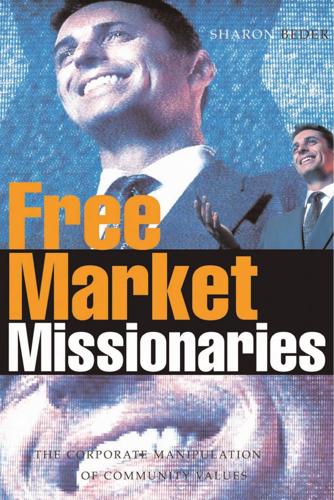
Free Market Missionaries: The Corporate Manipulation of Community Values
by
Sharon Beder
Published 30 Sep 2006
It was a consultant for the restructuring of the State Electricity Commission of Victoria (SECV), Melbourne Water and the Victorian Gas and Fuel Corporation. It advised the Queensland government on the sale of electricity generation and led Queensland’s Electricity Industry Structure Task Force from 1996–98. It also advised the NSW government on privatization of the electricity industry in 1997 and advised the Industry Commission on electricity market reform in NSW in 1998.84 London Economics has also been involved in electricity and water industry restructuring in a number of other countries, including India (investigation for the World Bank), Malaysia, Thailand, Indonesia and New Zealand. It has advised companies in France, Germany, Italy and Spain on the impact of deregulation.

Invention: A Life
by
James Dyson
Published 6 Sep 2021
Our Lincolnshire farms provide electricity through anaerobic digesters to more than ten thousand homes. If we could sell electricity to households at a lower price than they pay today, we would be only too delighted to. But electricity bills don’t come direct from the National Grid. The electricity “retailers” have a monopoly distribution, courtesy of Ofgem (Office of Gas and Electricity Markets), the supposed government regulator, their demands sent out from an array of middlemen who do absolutely nothing except play with computer programs and prepare and post bills. They neither generate electricity, nor take risk, nor maintain the infrastructure. Cutting out the middleman, and those who add no value, ought to be a popular national campaign—it would mean the possibility of profit for risk-takers and producers and lower prices for consumers.

Our Lives in Their Portfolios: Why Asset Managers Own the World
by
Brett Chistophers
Published 25 Apr 2023
Approximately three-quarters of new solar and wind capacity installed in recent years represents private-sector investment.48 And not only is the private sector responsible for, and in control of, the lion’s share of new green power infrastructure – it is much less invested in legacy fossil-fuel-based generating infrastructure: over half of total operating global coal-power capacity, for example, is held by governments or state-owned enterprises.49 Furthermore, the private sector appears to be exiting legacy dirty-power assets with greater haste: ‘privately-owned firms are moving out of the coal sector faster than state-owned enterprises, by investing in fewer new plants’.50 If the future is indeed predominantly green, then the private sector, on this evidence, appears likely to have the leading share in its ownership. In liberalised power markets where the private sector dominates new (and increasingly green) capacity investment, the role of the state has been mainly what we have discussed several times already: namely, to de-risk said private-sector investment. Wholesale electricity markets are notoriously volatile – never more so, in fact, than during the period of writing of this book in 2021 and 2022 – and thus even though the costs of wind turbines and photovoltaic solar panels have declined dramatically in the past decade, banks are reluctant to lend capital for the construction of new wind or solar plants unless mechanisms for mitigating revenue risk are in place.

The Measure of Progress: Counting What Really Matters
by
Diane Coyle
Published 15 Apr 2025
Mainstream economics has generally paid little attention to the digital stack although it is fundamentally important to the digital economy, perhaps because India is m iddle income, Estonia is small and ex-USSR. I am inclined to think that ignoring the infrastructure aspects of global digitalisation is of a piece with economists’ lack of interest in the role of infrastructure in general (save for deep but narrow interest in some aspects, such as the operation of electricity markets). B or de r s 177 It is surely also apparent to readers, six chapters in, that the invisibility of the economy as it is now in the statistics available is extraordinary. The final chapter of this book w ill return to the broad “hard-to-measure” issue: what might be an appropriate framework for better understanding and measuring an economy whose value added is increasingly intangible due to digital technologies, and thus hard to confine within boundaries—either geographic or sectoral—and with characteristics that contrast with physical goods (non-rival rather than rival, increasing rather than constant returns to scale, and therefore featuring many externalities).

Boom: Bubbles and the End of Stagnation
by
Byrne Hobart
and
Tobias Huber
Published 29 Oct 2024
But since we consider Bitcoin to be one of the most interesting technological breakthroughs and socio-economic experiments of the last decades, this chapter focuses exclusively on Bitcoin and not on crypto in general. 293 Satoshi Nakamoto, “Bitcoin: A Peer-to-Peer Electronic Cash System,” United States Sentencing Commission, https://www.ussc.gov/sites/default/files/pdf/training/annual-national-training-seminar/2018/Emerging_Tech_Bitcoin_Crypto.pdf. 294 Satoshi Nakamoto, “Bitcoin Open Source Implementation of P2P Currency,” Satoshi Nakamoto Institute, February 11, 2009, https://satoshi.nakamotoinstitute.org/posts/p2pfoundation/1/. 295 The electricity market is surprisingly complex, and an important feature of the market is that it needs to continuously clear—that is, the amount of electricity consumed must always equal the amount produced. When demand is uncertain, there are two possible ways to respond: increase production or decrease consumption.
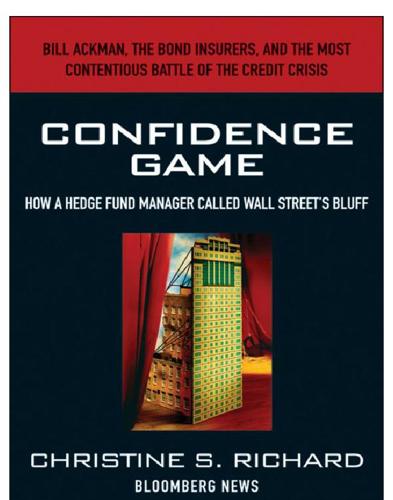
Confidence Game: How a Hedge Fund Manager Called Wall Street's Bluff
by
Christine S. Richard
Published 26 Apr 2010
In a follow-up letter to Ackman after the meeting, Wertheim reminded Gotham what was at stake: “MBIA is a regulated insurance company that operates in a regulated environment and acts in a fiduciary capacity for the benefit of our many constituencies—principally our policyholders, our customers, including the numerous states and municipalities that rely on bond insurance, and our stockholders but also our employees, our community, and the other people who rely on the vitality of the markets that we support. . . . MBIA’s credibility and reputation in the market, and its triple-A ratings, are critical to our continued ability to service these constituencies.” In the meeting, Brown compared Gotham to Enron, which had been accused of manipulating California’s electricity market. Was Gotham seeking to manipulate perceptions about a regulated insurance company by taking positions in the unregulated CDS market? Brown also asked Ackman how long Gotham planned to hold its CDS position on MBIA. Ackman explained that for the hedge fund to make money on its CDS position, it was going to have to be correct in its criticism of MBIA.
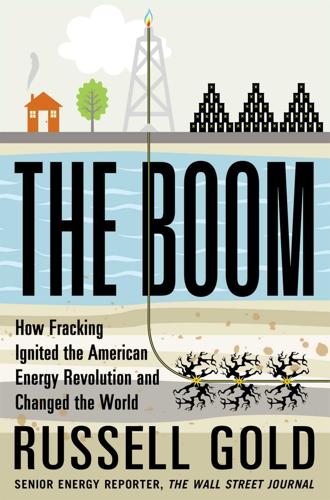
The Boom: How Fracking Ignited the American Energy Revolution and Changed the World
by
Russell Gold
Published 7 Apr 2014
It filed a complaint in April, a month after El Paso Merchant traders started acting effectively as the gatekeeper for gas headed to California. It would take years for this complaint to work its way through the regulatory process. In the meantime, El Paso traders began to do what the state feared: control gas supply and drive up market prices. The California energy meltdown of 2000 and 2001 is remembered largely as a crisis in the electricity market. Wholesale power prices spiked. There were more than one hundred electrical emergencies declared and a handful of rolling blackouts. But the power crisis was intertwined with problems in the natural gas market. In March 2000, when El Paso Merchant took control of the pipeline contracts, gas at the California border cost $2.84 per thousand cubic feet.

The Investment Checklist: The Art of In-Depth Research
by
Michael Shearn
Published 8 Nov 2011
Eventually, the vitamin business was liquidated.6 When you see a business make an acquisition outside of its core business, this may be a signal that the profitability or sales of the original business are declining or maturing. Other times, management egos may be involved. For example, at one time, energy giant Enron controlled large portions of the gas and electricity markets in the United States. Then it began to expand outside of its core business by attempting to corner the market on broadband capacity; Enron even attempted to become the world’s largest water company. Enron lost billions of dollars on these ventures, and the company began to manipulate its accounting numbers to shield these losses, eventually filing for bankruptcy in 2001.

Innovation and Its Enemies
by
Calestous Juma
Published 20 Mar 2017
This chapter will illustrate a second dimension—that is, tensions between the proponents of Thomas Edison’s direct current (DC) and the champions of George Westinghouse’s competing alternating current (AC).1 It’s a story of the fight over who would control the electrification of the United States and the world, played out in the engineering arguments between DC and AC. In this case, Edison sought to delay the widespread adoption of DC until he was able to divest his investments from sections of the electricity market that were likely to be taken over by the new technology. His strategy was to relocate his investments to other activities rather than try to stop the spread of AC technology. Thomas Edison electrified the Western world. He improved the incandescent light bulb that could burn consistently over many hours using DC.

The Economics Anti-Textbook: A Critical Thinker's Guide to Microeconomics
by
Rod Hill
and
Anthony Myatt
Published 15 Mar 2010
‘But this raised an interesting question: basic laws of economics say that competition is supposed to result in zero profits; if the lobbyists really believed their proposals would result in intense competition, why were they investing so much trying to convince the government to adopt these proposals?’ (ibid.: 90). In the 1990s, deregulation of the electricity market led to Enron’s market manipulation, which hurt the California economy. Deregulation of banking opened up new opportunities for conflicts of interest that led eventually to the sub-prime meltdown. Lax regulation of the accounting sector provided oppor tunities and incentives to provide misleading or wrong information that led to a raft of corporate scandals.

Makers and Takers: The Rise of Finance and the Fall of American Business
by
Rana Foroohar
Published 16 May 2016
It emerged, for example, that Goldman played a big role in the uranium trading business via a subsidiary that employed Goldman staff, and that a now sidelined Morgan Stanley natural gas project was essentially a shell company set up by executives from Morgan Stanley’s commodities arm. The list of problematic commodities deals goes on. In two others, J.P. Morgan was accused of manipulating copper and electricity markets; it paid $410 million in penalties to settle the latter case.48 All of this led Senator Levin to conclude, “We’ve got to get banks out of this kind of business because of the risk to the economy and the possibility of manipulation.”49 Goldman Sachs, for its part, denied all wrongdoing in the aluminum case and claimed in Senate hearings and public comments that it was always acting on customer orders and needs, and was willing to sell and deliver supplies to customers at any time.

Rule Britannia: Brexit and the End of Empire
by
Danny Dorling
and
Sally Tomlinson
Published 15 Jan 2019
Legal services 46. Publishing 2. Aerospace 17. Defence 32. Life sciences 47. Rail, including manufacturing 3. Agriculture, animal health and food and drink manufacturing 18. Design: product, graphic and fashion design 33. Machinery and equipment 48. Real estate 4. Architecture 19. Electricity market, including renewables 34. Maritime/ports, including marine equipment 49. Retail 5. Asset management 20. Electronics 35. Market infrastructure (financial services) 50. Retail and corporate banking 6. Audit and accounting 21. Environmental services: waste 36. Medical devices 51.

Power Play: Tesla, Elon Musk, and the Bet of the Century
by
Tim Higgins
Published 2 Aug 2021
Jonas could see the potential for Tesla cars to move from a “rich man’s toy to mass market,” he told investors, while cautioning that the company’s long-term independence could only be achieved through Musk’s long-held goal of coming out with an electric car at a price of around $30,000. The risks were great, though. He warned that missteps and delays in bringing out the Model S could hinder that ambition, as could the entry into the electric market of more experienced automakers. “As is not uncommon with start-ups, the biggest question is if Tesla can remain solvent long enough to capitalize on the forthcoming technology break-throughs,” Jonas wrote to investors in financese, when initiating his coverage of Tesla several months later.

The Content Trap: A Strategist's Guide to Digital Change
by
Bharat Anand
Published 17 Oct 2016
And breaking news means chaos: deadlines, last-minute confusion, rushed stories. This increases costs, too: Newsroom resources need to be sufficiently high at the last minute to ensure that content can be produced on time. Economists call this a “peak-load problem.” (Peak-load problems are familiar elsewhere, notably in electricity markets, which can experience substantial unpredictable variation in demand across times of the day or month. Plants need enough generating capacity to meet peak-load needs.) The problem is that by meeting peak-load demand, you create excess capacity and added cost during nonpeak periods. As radio and television entered the news market, the mantle of breaking news shifted away from newspapers.

The Rational Optimist: How Prosperity Evolves
by
Matt Ridley
Published 17 May 2010
(Of course, coal mining and oil drilling can and do spoil the environment, too, but compared with most renewables their footprints are surprisingly small for the energy they yield.) Besides, there is just no sign of most renewables getting cheaper. The cost of wind power has been stuck at three times the cost of coal power for many years. To get a toehold in the electricity market at all, wind power requires a regressive transfer from ordinary working people to rent-seeking rich landowners and businesses: as a rule of thumb, a wind turbine generates more value in subsidy than it does in electricity. Even in 6,000-turbine Denmark, not a single emission has been saved because intermittent wind requires fossil-fuel back-up (Denmark’s wind power is exported to Sweden and Norway, which can turn their hydro plants back on quickly when the Danish wind drops).

The Zero Marginal Cost Society: The Internet of Things, the Collaborative Commons, and the Eclipse of Capitalism
by
Jeremy Rifkin
Published 31 Mar 2014
In 2013, Germany was already generating 23 percent of its electricity by renewable energy and is expected to generate 35 percent of its electricity from renewables by 2020.40 The problem is that during certain times of day, the surge of solar and wind power flooding into the grid is exceeding the demand for electricity, resulting in negative prices. Nor is Germany alone. Negative prices for electricity are popping up in places as diverse as Sicily and Texas.41 This is a wholly new reality in the electricity market and a harbinger of the future as renewable energy comes to make up an increasing percentage of electricity generation. Negative prices are disrupting the entire energy industry. Utilities are having to push back on investing in “backup” gas and coal fired power plants because they can no longer guarantee a reliable return on their investments.

The Forgotten Man
by
Amity Shlaes
Published 25 Jun 2007
“You see,” Lilienthal wrote in those years, “I have a very strong feeling that if we cannot control our basic industries, and certainly nothing is more basic than the utilities industry, then we have no government in fact, merely a pathetic fiction of government.” Like the La Follettes, and Roosevelt for that matter, Lilienthal feared that once private power conquered the electricity market, it would abuse it. This was the sort of thing he and “FF”—Frankfurter—had discussed when Lilienthal saw him at the university, or at Frankfurter’s house at 192 Brattle Street in Cambridge. While as serious as the two Morgans, Lilienthal was fundamentally different. If the two were dreamers of the nineteenth century, Lilienthal was a twentieth-century dreamer—the sort who believed that having adequate statutory language, the sufficient bureaucratic authority, and the sufficient budget were prerequisites to realizing a dream, not something one went out and retrieved as an afterthought.

Tailspin: The People and Forces Behind America's Fifty-Year Fall--And Those Fighting to Reverse It
by
Steven Brill
Published 28 May 2018
The bank had also paid fines and penalties (some of which were tax-deductible) of over $32.4 billion to resolve fifty-five Justice Department, SEC, and other enforcement proceedings alleging civil violations of various banking laws and regulations—including cheating credit card customers with fraudulent debt collection practices, manipulating electricity markets, illegally foreclosing on homes owned by people serving in the armed forces, and fraudulently selling toxic mortgage-backed securities in the run-up to the 2009 crash. In no case was a senior executive of the recidivist bank charged, nor has JPMorgan as a corporation ever had to plea to the kind of criminal charge that, under various banking laws and regulations, could result in the suspension or revocation of its banking licenses.
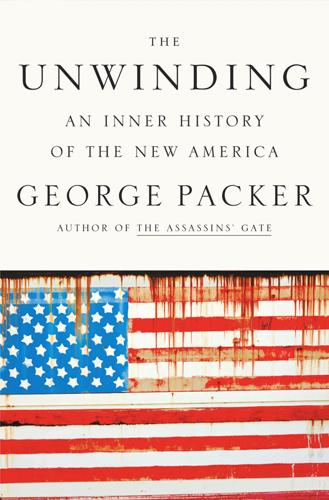
The Unwinding: An Inner History of the New America
by
George Packer
Published 4 Mar 2014
The firm’s clients included the American Petroleum Institute, the nursing home industry, the British Columbia Lumber Trade Council, Verizon, Bank of America, Hewlett-Packard, and Larry Silverstein, the leaseholder of the World Trade Center. Quinn Gillespie helped Enron beat back attempts to regulate the electricity markets in California shortly before the company went bankrupt, and it represented the families of Pan Am Flight 103 in their effort to collect reparations from Libya. Connaughton had one of his biggest successes with online advertisers. He became the spokesman for a grasstop group called the Network Advertising Initiative, spent half a year working up a self-regulatory system for the industry, met with all five commissioners at the Federal Trade Commission and the attorneys general of seven states, and headed off a bill in Congress that would have helped consumers prevent websites from collecting data on their Internet spending habits.
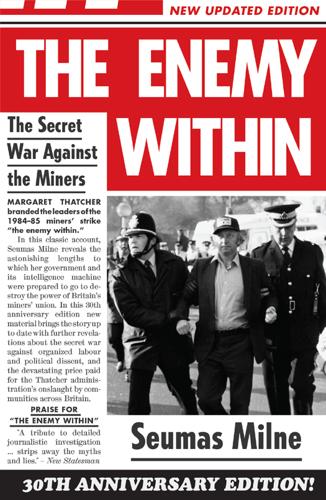
The Enemy Within
by
Seumas Milne
Published 1 Dec 1994
Even as late as the spring of 1993 domestic coal still accounted for 60 per cent of electricity generation, but that proportion would fall dramatically as British Coal’s guaranteed sales to the privatized generators were cut by more than half. By that point, the torrent of redundancies had become the straightforward outcome of the calculated rundown of the industry and the ruthless displacement of coal in the newly privatized electricity market. Despite the political cost, Major’s government made sure the job was finished. By the tenth anniversary of the 1984–5 strike, Heseltine’s much-vaunted ‘agonizing’ over pit closures had miraculously subsided. The ‘political power of the extremist-led union’ had, he now explained, been to blame for the most drastic industrial rundown in Britain’s history.16 THE SCARGILL FACTOR For the Tories and the British establishment as a whole, Arthur Scargill came to embody all that they most feared and hated about trade-union power in general and the miners in particular.
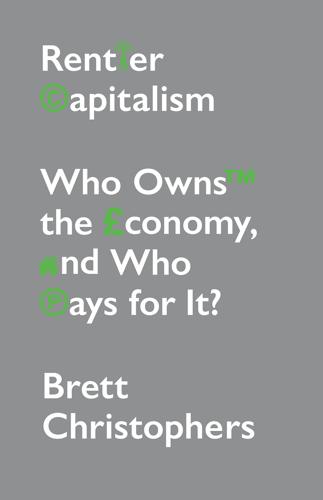
Rentier Capitalism: Who Owns the Economy, and Who Pays for It?
by
Brett Christophers
Published 17 Nov 2020
Uppsala, March 2020 Abbreviations ABP Associated British Ports ABPI Association of the British Pharmaceutical Industry AWS Amazon Web Services BAT British American Tobacco BIA BioIndustry Association BIG British Infrastructure Group BNOC British National Oil Corporation CAA Civil Aviation Authority CAGR Compound annual growth rate CAP Common Agricultural Policy CCT Compulsory competitive tendering CGT Capital gains tax CHPI Centre for Health and the Public Interest CMA Competition and Markets Authority CRC Community Rehabilitation Company CRE Commercial real estate CSU Commissioning support unit DEFRA Department for Environment, Food and Rural Affairs DHSC Department of Health and Social Care DRC Democratic Republic of Congo DTI Department of Trade and Industry ECU European Currency Unit FBA Fulfillment By Amazon FSA Financial Services Authority GDP Gross domestic product GLC Greater London Council GNP Gross national product GOS Gross operating surplus GVA Gross value-added HMRC Her Majesty’s Revenue and Customs HR Human resources IFA Intangible fixed asset IP Intellectual property IPPR Institute for Public Policy Research IWGB Independent Workers’ Union of Great Britain KPI Key performance indicator LSE London Stock Exchange LSEG London Stock Exchange Group MHCLG Ministry of Housing, Communities and Local Government MoD Ministry of Defence NAO National Audit Office NFC National Freight Corporation NIC National Infrastructure Commission NIDP National Infrastructure Delivery Plan OE Oxford Economics OECD Organisation for Economic Co-operation and Development Ofcom Office of Communications Ofgem Office of Gas and Electricity Markets OFT Office of Fair Trading Ofwat Water Services Regulation Authority ONS Office for National Statistics Opec Organization of the Petroleum Exporting Countries OSI Oxford Sciences Innovation OUI Oxford University Innovation PFI Private Finance Initiative QE Quantitative easing R&D Research and development REIT Real estate investment trust ROSCO Rolling stock company RPI Retail price index SIC Standard industrial classification SMEs Small and medium-sized enterprises SPC Supplementary protection certificate SPV Special purpose vehicle TfL Transport for London TOC Train operating company TRIPS Agreement on Trade-Related Aspects of Intellectual Property Rights UKCS UK Continental Shelf VAT Value-added tax WTO World Trade Organization Preface Few people in the United Kingdom, let alone further afield, have heard of Arqiva.

Imagining India
by
Nandan Nilekani
Published 25 Nov 2008
Krishna Kumar, chairman of Turbotech, is especially enthused about the infrastructure investments around gas—he tells me that firms such as GAIL, Reliance Industries and the Gujarat State Petroleum Corporation (GSPC) are “building a gas pipeline that will grow from six thousand kilometers to over twenty-four thousand kilometers across India by the end of 2008.” India has also benefited from a national oil market governed by a central regulatory policy, with a seamless retail and distribution network across the country. And the Electricity Act of 2003 has envisioned a uniform tariff policy across electricity markets, as well as a single regulatory framework. Moving cracks “The Congress party,” one of its party workers says to me, “is in holding operation. Our glory days are past.” India’s early years were marked by political unity but economic fragmentation. Since the 1990s, however, we have moved toward the integration of India’s local and regional markets.
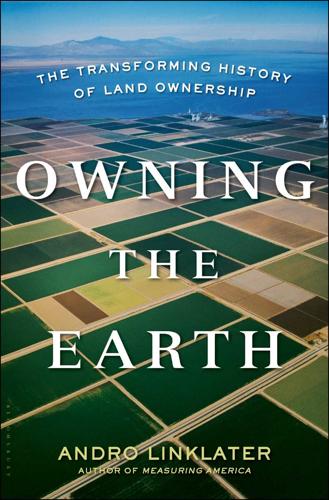
Owning the Earth: The Transforming History of Land Ownership
by
Andro Linklater
Published 12 Nov 2013
In the years after 1873, Germany had developed more than three hundred cartels to control the production and pricing levels in every large industry from coal mines to the manufacture of ice skates. In 1913, nine Berlin banks commanded 83 percent of the nation’s working capital; ten mining corporations were responsible for 60 percent of coal production; the five largest chemical companies produced 95 percent of all dyes; and two giants, Siemens and AEG, held half the electricals market. Sheltered by high tariffs and knowing in advance their profit margins and product runs, the German iron and steel cartel produced 20 percent more pig iron between 1893 and 1907 at lower cost and higher profit than Britain’s free-trade, free-market smelting plants as they attempted to upgrade old-fashioned technologies on paper-thin returns from oversupplied consumers.
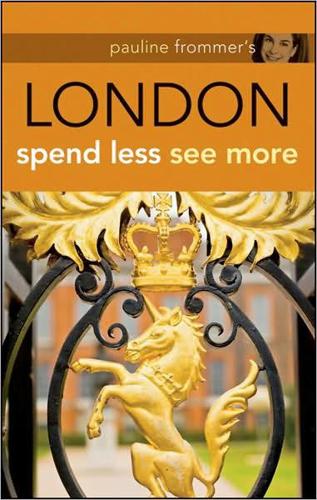
Pauline Frommer's London: Spend Less, See More
by
Jason Cochran
Published 5 Feb 2007
.; daily (but weekends are best); Tube: Camden Town) Good for: Tourists favor its variety of cheap fashions, sunglasses, music mixes, fresh-made foods, partly in a dockside setting. A 2008 fire destroyed the Canal Market part of it, but there’s still of plenty of shopping left in several other connecting areas. Also check out: Stables Market, on the other side of the railway off Chalk Farm Road, sells vintage clothes, antiques, and pop culture knick-knacks; Electric Market (on Camden High Street) is an indoor fair of cool T-shirts, fake furs, and goth wear, Saturday and Sunday. 13_308691-ch09.qxp 282 12/23/08 Chapter 9 9:19 PM Page 282 London’s Best Shopping Hacking the Tax Attack First, the good news. When you see a price in England, that’s the full price.
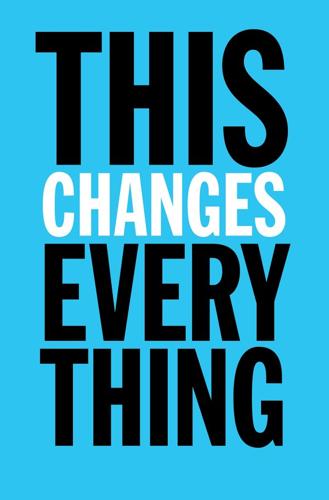
This Changes Everything: Capitalism vs. The Climate
by
Naomi Klein
Published 15 Sep 2014
And as a 2013 paper produced by a research team at the University of Greenwich explains, “Historically, the private sector has played little role in investing in renewable energy generation. Governments have been responsible for nearly all such investments. Current experience from around the world, including the markets of Europe, also shows that private companies and electricity markets cannot deliver investments in renewables on the scale required.”16 Citing various instances of governments turning to the public sector to drive their transitions (including the German experience), as well as examples of large corporate-driven renewable projects that were abandoned by their investors midstream, the Greenwich research team concludes, “An active role for government and public sector utilities is thus a far more important condition for developing renewable energy than any expensive system of public subsidies for markets or private investors.”17 Sorting out what mechanisms have the best chance of pulling off a dramatic and enormously high-stakes energy transition has become particularly pressing of late.

Coastal California
by
Lonely Planet
Reacting against the banal complacency of post-WWII suburbia, 1950s beatniks and 1960s hippies flocked to California spreading poetry and free love, and in the ’70s, Gay Pride activists kept the social revolution going. The internet revolution, spurred by Silicon Valley near San Francisco, rewired the economy and led to a 1990s boom in overspeculated stocks. When the bubble burst in 2000, it plunged the state’s economy into chaos, especially when deregulation of the electricity market led to rolling blackouts and sky-high power bills. In the new millennium, meltdowns on Wall Street and the lingering US recession have caused a staggering financial crisis that California has yet to bounce back from. Ballistic population growth, pollution and traffic are other vexing issues.
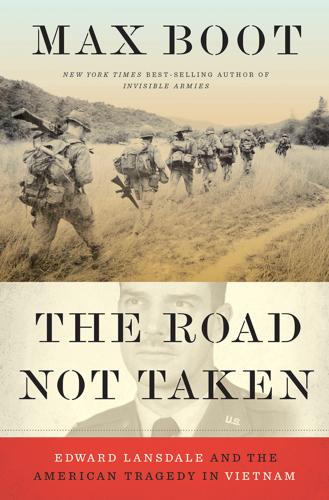
The Road Not Taken: Edward Lansdale and the American Tragedy in Vietnam
by
Max Boot
Published 9 Jan 2018
“The six years of peace,” they would call it.6 Now the interlude between wars was over and a new struggle was beginning, one that would eclipse the French Indochina War in its inhumanity. NGO DINH DIEM responded to the Communist threat in the summer of 1959 with a new program to move residents of the Mekong Delta out of their isolated villages into “agricultural towns,” eventually known as agrovilles, where they would be provided with amenities such as electricity, markets, clinics, schools—and, above all, security. This was not, at least in theory, a bad idea: similar population resettlement plans had been implemented in campaigns against guerrillas from turn-of-the-century South Africa and the Philippines to, more recently, Malaya and Algeria. But the implementation of the agroville plan was badly flubbed.

Bourgeois Dignity: Why Economics Can't Explain the Modern World
by
Deirdre N. McCloskey
Published 15 Nov 2011
Deregulation, Innovation, and Market Liberalization: Electricity Regulation in a Continually Evolving Environment. London: Routledge. Kiesling, Lynne. 2011. “Boettke on Cowen, Smith, Schumpeter, and Stupidity” (blog post). Knowledge Problem, http://knowledgeproblem.com/. Kiesling, Lynne. 2012. “Regulation’s Effect on Experimentation in Retail Electricity Markets.” In Emily Chamlee-Wright, ed., The Wealth and Well-Being of Nations, vol. 4, Self-Governance, Polycentrism, and the Social Order, pp. 89–113. Beloit, WI: Beloit College Press. Kimbrough, Erik O., Vernon L. Smith, and Bart J. Wilson. 2008. “Historical Property Rights, Sociality, and the Emergence of Impersonal Exchange in Long-Distance Trade.”
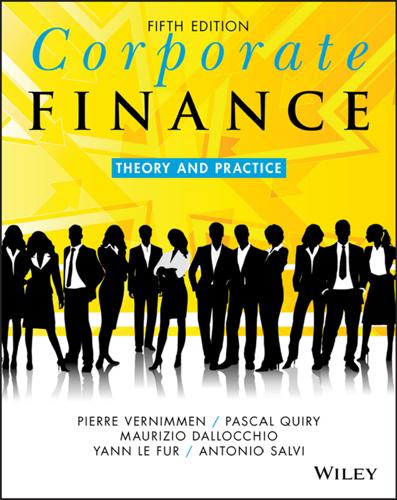
Corporate Finance: Theory and Practice
by
Pierre Vernimmen
,
Pascal Quiry
,
Maurizio Dallocchio
,
Yann le Fur
and
Antonio Salvi
Published 16 Oct 2017
Floating-rate borrowings, for example, expose companies to an increase in the benchmark rate, while fixed-rate borrowings expose them to opportunity cost if they cannot take advantage of a possible cut in rates. In addition to currencies and interest rates, other market-related risks require companies to take positions. In many sectors, for example, raw material prices are a key factor. A company can have a strategically important position in oil, coffee, semiconductors or electricity markets, for example. 3. Value at risk (VaR) and corporate value at risk VaR is a finer measure of market risk. It represents an investor’s maximum potential loss on the value of an asset or a portfolio of financial assets and liabilities, based on the investment timeframe and a confidence interval.